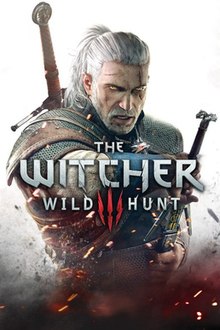 I love The Witcher series. I played the second game somewhere in 2019, read the first two novels at around the time that the Netflix series came out, and sunk a whole lot of hours into Witcher III this year. And I may have been a couple of years late to the bandwagon, but Witcher III is easily one of the best role-playing games that, I feel, got the balance between open-world freedom and not just dropping the players into a directionless sandbox just right.
I love The Witcher series. I played the second game somewhere in 2019, read the first two novels at around the time that the Netflix series came out, and sunk a whole lot of hours into Witcher III this year. And I may have been a couple of years late to the bandwagon, but Witcher III is easily one of the best role-playing games that, I feel, got the balance between open-world freedom and not just dropping the players into a directionless sandbox just right.And one thing that Witcher games never disappoint in? Monsters. And this time around, we'll cover just the monsters in the base game, and I'm only going to talk about the monsters as they are defined in Geralt of Rivia's in-game bestiary. No humans, no elves, no warriors of the Wild Hunt, and while I'll briefly mention them when I have something to say about the specific quests that I personally find notable, for the most part I won't be talking about the 'elite' enemies with unique names that are the subject of contract quests.
Also, reviewing these Witcher monsters and reading a lot about real-life cultural myths have given me a fair bit of appreciation for other cultures' monsters and legends. And I think it goes without saying that every monster review in this blog has to be prefaced with a version of 'we know that this isn't 100% accurate of a representation of the original myth, but either due to narrative or gameplay purposes, some things have to be altered.' I do intend to at some point go back and put some stronger disclaimers on some of the iffier monsters in like, D&D or something. As far as The Witcher goes, though, a lot of the creators involved are actually from the lands that these specific myths come from, which is why they enjoy a neat degree of accuracy to the real-life legends.
Oh, and I'm also going to only cover the creatures in the base game... for the simple reason that as of the time of writing this, I haven't played any of the two DLC's. Without further ado, we'll start off with the first half of Witcher III: Wild Hunt's bestiary!
_________________________________
Beasts
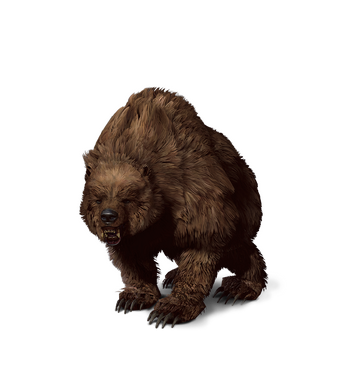
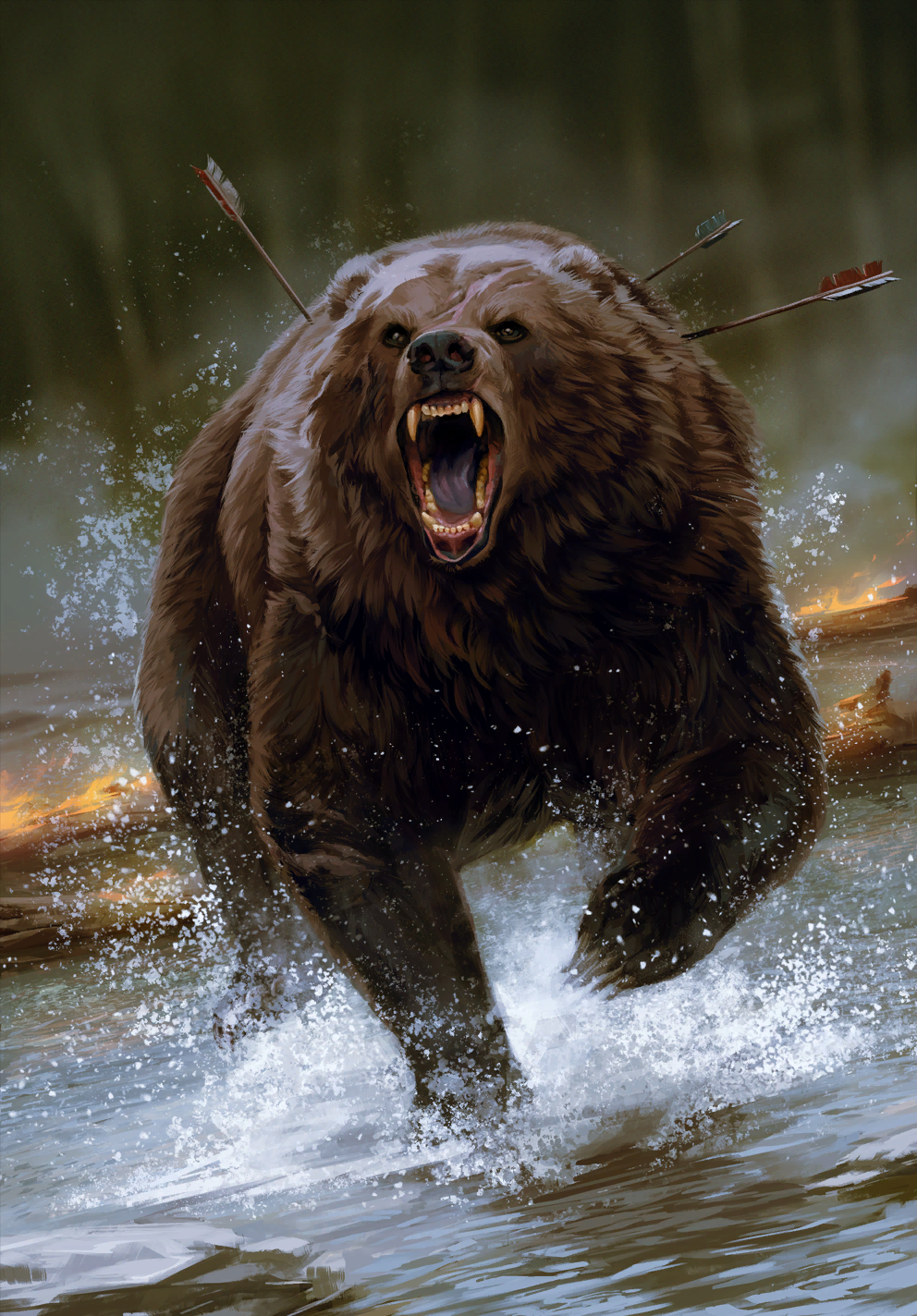
Bear
The world of the Witcher categorizes monsters into various categories, and easily the most recognizable and the most boring is 'Beasts'. I don't think we had too many natural beasts in Witcher II. Being a more open-world game than its predecessor, Witcher III brings in a bunch of natural big beasts -- our typical 'bear and wolf' duo that has to appear in practically every open-world fantasy RPG at this point. And what's to say here? There are three variants (Black Bear, Polar Bear, Cave Bear) and they behave like real-life bears, pretty fucking scary and able to kill you and take a lot of punishment to kill. Not a whole ton to say here, so I'll just note that in Witcher III, the game also has an in-game TCG called Gwent that provides a lot of the fancy-looking artwork that will be accompanying the 3D models.
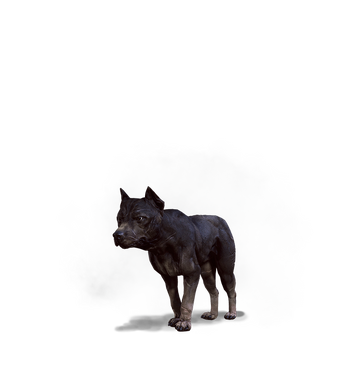
Dog
Dogs are one of the first enemies that Geralt will face in Witcher III, and, well, as the game bestiary will tell you, the war that is wracking the Northern Lands has caused many, many wild dogs to basically be angry, hungry, abused and more than willing to track down the ill-mannered peasants that are mean to them and turn them into ill-mannered lunch. For the most part the Wild Dogs are just essentially smaller wolves, although they're more thematic when found in the company of like, humans who use them as attack hounds. Not much to say here.
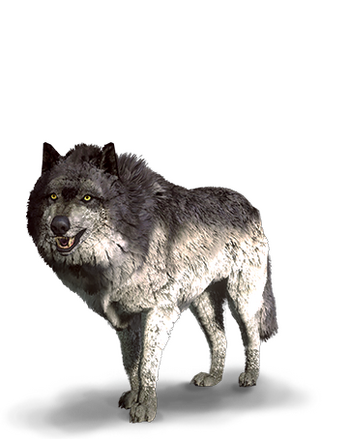
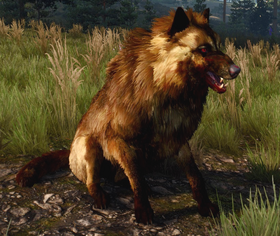
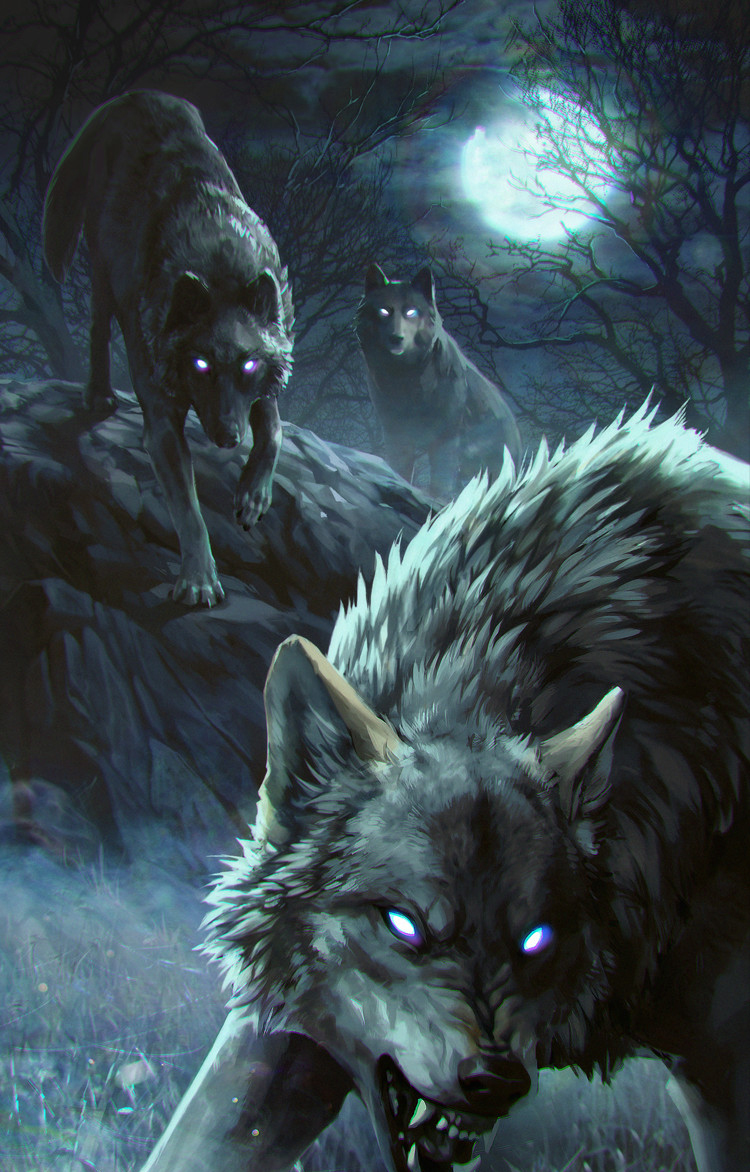
Wolf (and Warg)
And here's a wolf. The game points out that, hey, just because Witcher-land has griffins and basilisks and ekimmaras and stuff doesn't mean that a pack of wolves is suddenly less of a threat to anyone that isn't a cat-eyed mutant. Wolves in this game hunt in packs and stuff, and are, again, pretty low on the rung of enemies in terms of threat... but they're not always just alone. Early on in the game wolves are led by a Warg -- basically a huge wolf in a different colour. Later on you meet them as minions of werewolves. And as Geralt goes off to the islands of Skellige, you get to see Snow Wolves. It's a video game wolf, so I'll just note that Wargs (whether they be the giant wolves from Lord of the Rings; giant wolves from D&D or skin-changers from Game of Thrones) are based on Vargr from Nordic mythology, which are basically huge, deity-like wolves like Fenrir.
________________________________
Cursed Ones
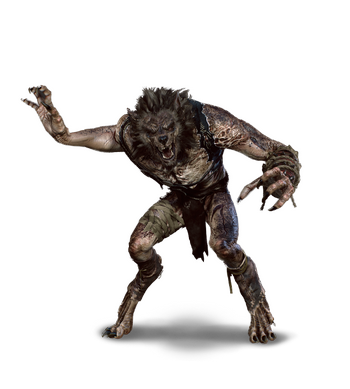
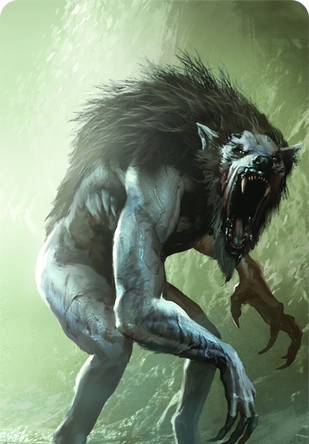
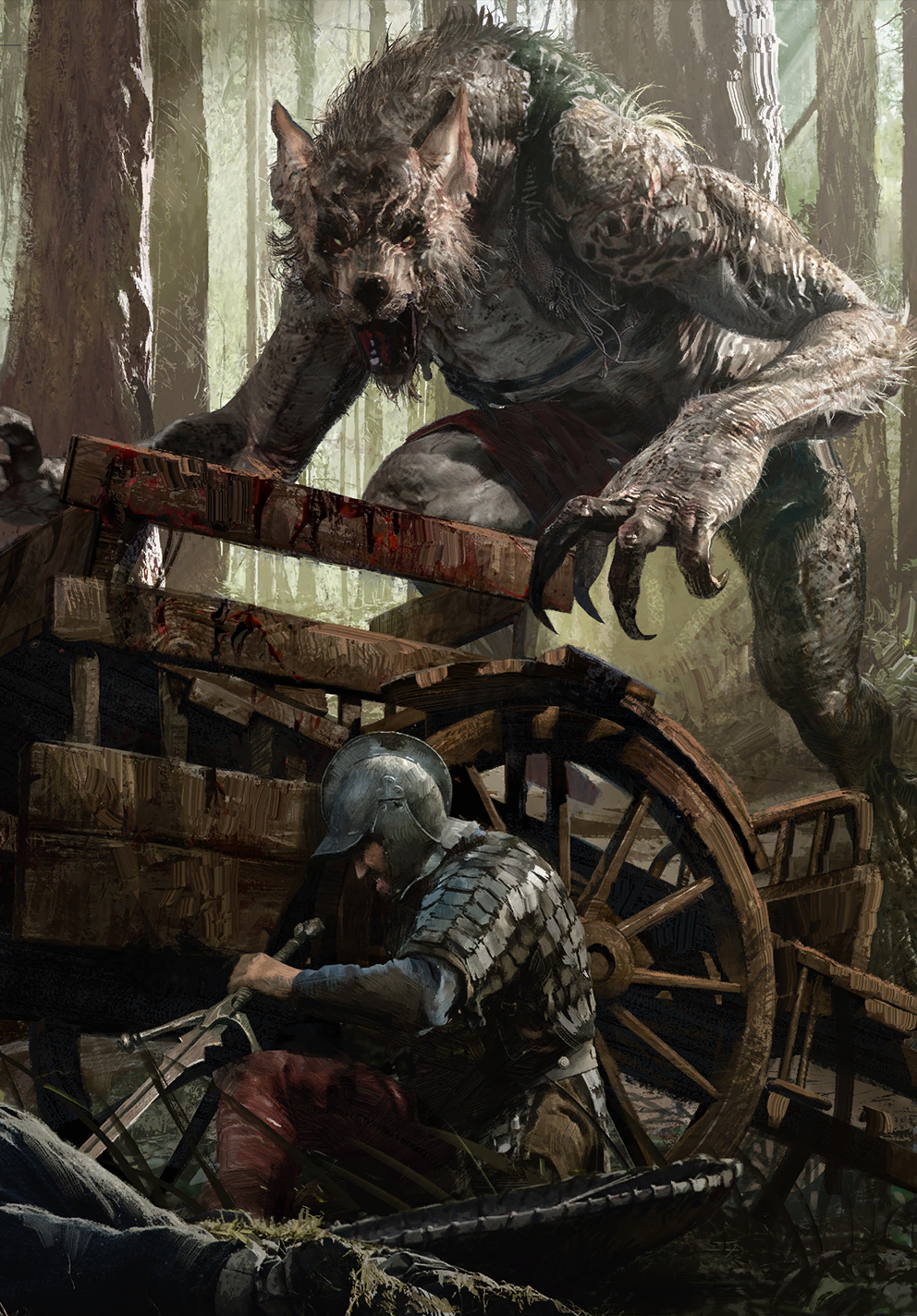
Werewolf
A new category introduced in Witcher III are the 'cursed ones', which are humans transformed by some sort of malevolent curse. And the first one is one of the most classic of these 'cursed' monsters, the good old werewolf. Appearing in all three Witcher games (as a bonus boss in the 'definitive edition' for Witcher II) and with the werewolf itself originating from European myths, it's certainly fitting that a monster-hunting game based primarily on European folklore stars these guys. Witcher-world werewolves are, as the most common pop culture/mythological versions of these beings, are humans who are cursed, and at night when the moon is full (although not always) they transform and get absolutely consumed by their wolf side, turning into a man-wolf that rampages around the countryside while retaining just enough of his/her human self's cunning... and reverts to human form with no memory of their werewolf side.
In-game, werewolves tend to hide in their lairs surrounded by wolves, and in-universe sources note that werewolves can be created when a human is cursed by a witch, or the curse is simply passed down from a werewolf parent to a child. Those that are born with the powers (like 'Little Red' in the game) seem to be able to control their shapeshifting powers, while those that are cursed (like other sidequests in the game) are only dimly aware of what they did while transformed, and most elect to go to secluded parts of the forest when they sense that the time comes to transform. It's honestly kind of familiar ground, but at the same time it's also pretty dang cool.
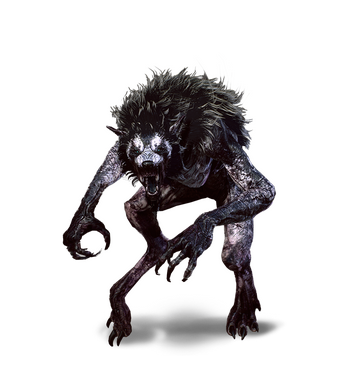
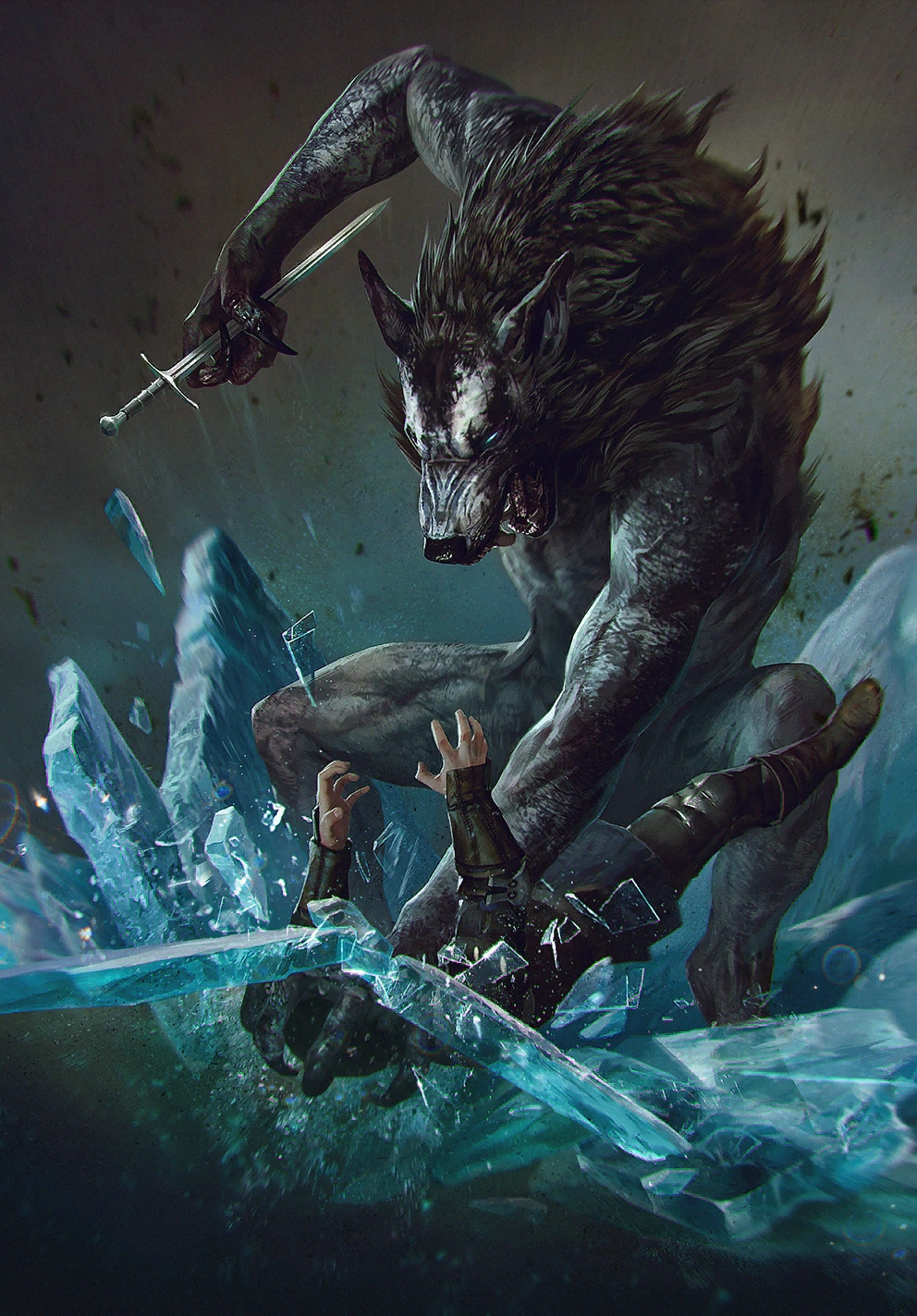
Ulfhedinn
Considered a different creature in the bestiary but technically a variant of the werewolf, the Ulfhedinn is found in the Norse-inspired Skellige Islands, and is itself inspired by the Úlfheðinn ('wolf coat') of Nordic myths, and, in the world of the Witcher, they are basically far more feral than their regular non-Skellige werewolves. I do like the design, too. Sure, the Ulfhedinn still uses the same movement and assets, but simply adding that metal-band-esque face markings and making the hair a lot mangier makes the Ulfhedinn -- at least in still images like this -- look so much more savage and primal. In addition to general ol' stat-buffs, Ulfhedinns can actually go into a berserker rage when you get its health down, being faster and stronger and summoning extra wolf buddies to help out. Cool!
The bestiary notes that stronger, older ulfhedinn are called 'vorefs', but no creature called a Voref actually shows up in Witcher III. The Witcher books and games in general are pretty great at having Geralt just sometimes rattle off monster names when comparing things which I thought was really cool at making the world feel so much bigger.
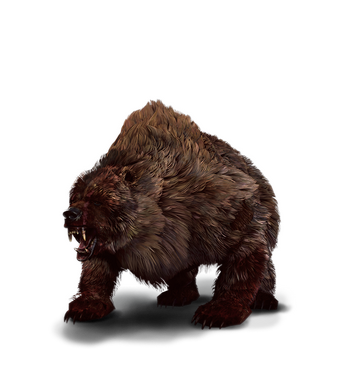
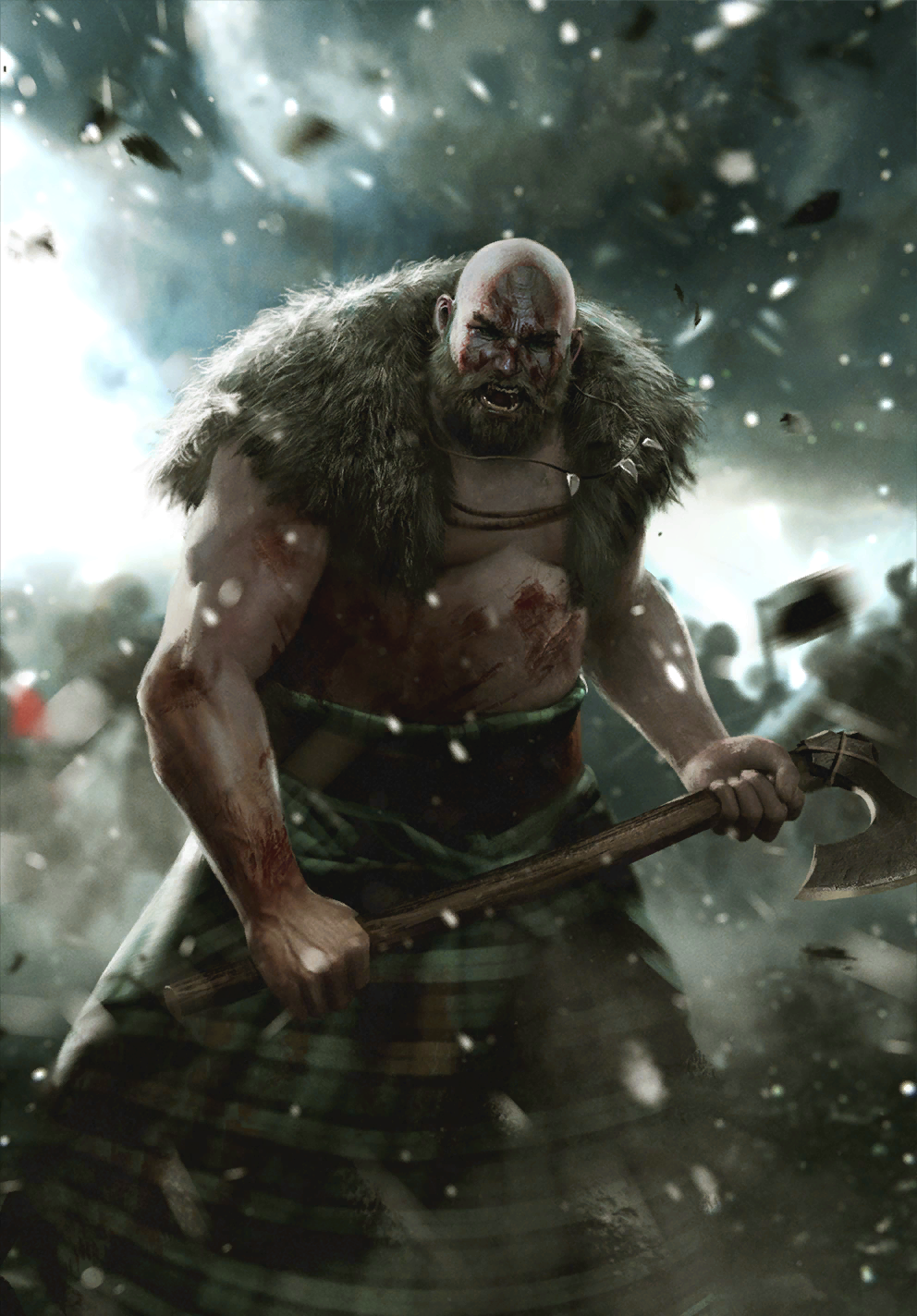
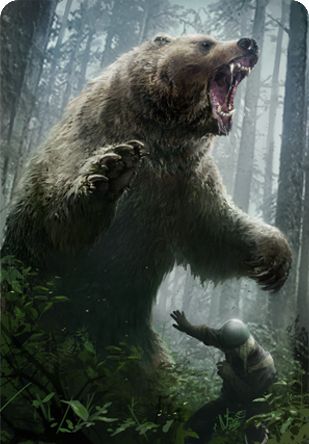
Berserker (Werebear)
Next we'll be talking about are the Berserkers, which are found in the Norse-inspired Skellige Islands, and they're basically... well, werebears. They're powerful warriors that, when overwhelmed by battle rage, will transform into a giant bear. (Apparently, there are subtle anatomical differences but most people are busy being mauled to really notice) In-universe the existence of Berserkers are interestingly treated with a bit of a disdain, and even the inhabitants of Skellige dismiss their existence as just tales... until, of course, Geralt finds the existence of a tribe-slash-cult that's able to turn into Werebears. Very great flavour, despite visually them just being, well, bears.
Pretty neat, and reading up about the origin of the word 'berserker' tells me that it's actually taken from the Old Norse word bersekr, meaning 'bear-shirt', denoting warriors who wade into battle wearing a coat of bear-skin, something that many interpretations have thought to be tales of these warriors shapeshifting into bears themselves. The more they know!
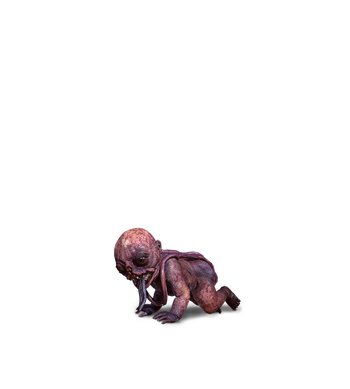
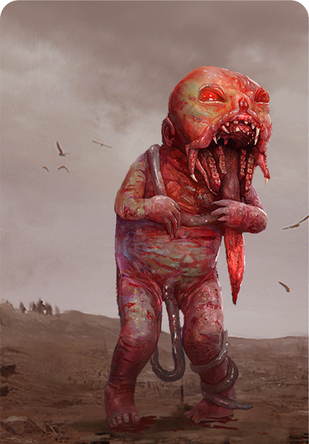
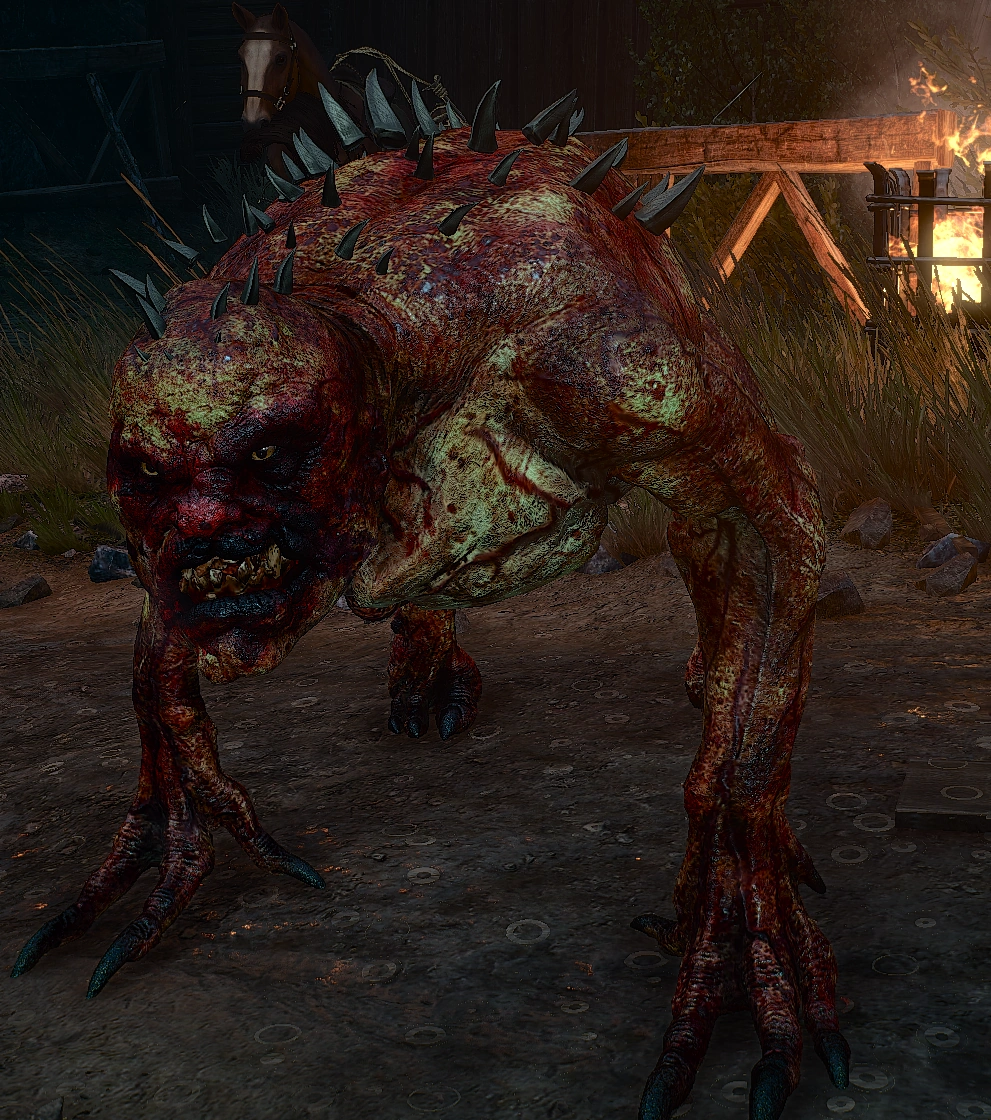
Botchling
You only really meet one of these nasty-looking motherfuckers, but hoo boy, the Botchling is very, very nasty. And this is perhaps the single most disturbing creature in the game, in no small part because it draws so heavily from actual mythology. Based on the Slavic Poroniec, the Botchling (even the name is sounds nasty) comes into existence from stillborn fetuses or babies that were buried improperly, and afterwards seek harm because heir potential of unrealized life. In the game itself, this is a major part of one of the main stories that Geralt must do, realizing that one of his allies had a Botchling roaming his grounds. The bestiary sheds more light on what the Botchling is, telling us of their origin... and the fact that these Botchlings actually hunt down other pregnant women to feed on their blood, going into detail about how they will emerge from its lair and lurk next to the bedside of its helpless victim, draining the strength of both the mother and unborn baby. The mother will have nightmares as she grows weaker and weaker, and when she truly is weak, the Botchling will chomp down and drain the blood and kill both mother and fetus.
We don't actually see the Botchling actually hunt down pregnant woman and killing them, but that's not to say that the Botchling isn't hideous already. The naked, blood covered baby-face, the fact that its mouth is just hanging open to show rows and rows of totally not-human teeth, and the umbilical cord wrapping around its neck and leg... very nasty. It's interesting that judging by the concept arts for the Botchling online, this is actually the version that seems to be the least monstrous and the one that's based the most on a real dead baby's look... which I would say is the most terrifying and unsettling version of it. It's disgusting and terrifying, yes, but also still looking like a dead baby brings a sense of wretched pity to it.
Also, you might see that there is another picture up there, some hideous, muscular ghoul with clearly not-baby proportions. See, when threatened (say, by a Witcher), the Botchling is able to assume a 'battle' form, which turns it into this ghoulish, terrifying ape-like hunchback creature. Poor baby!
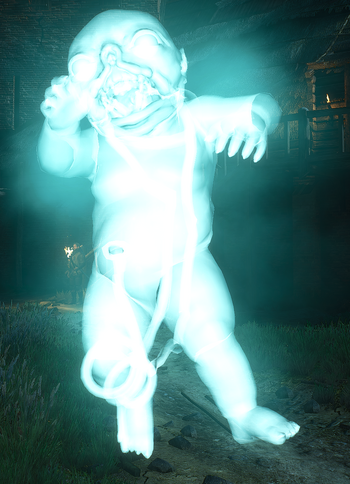
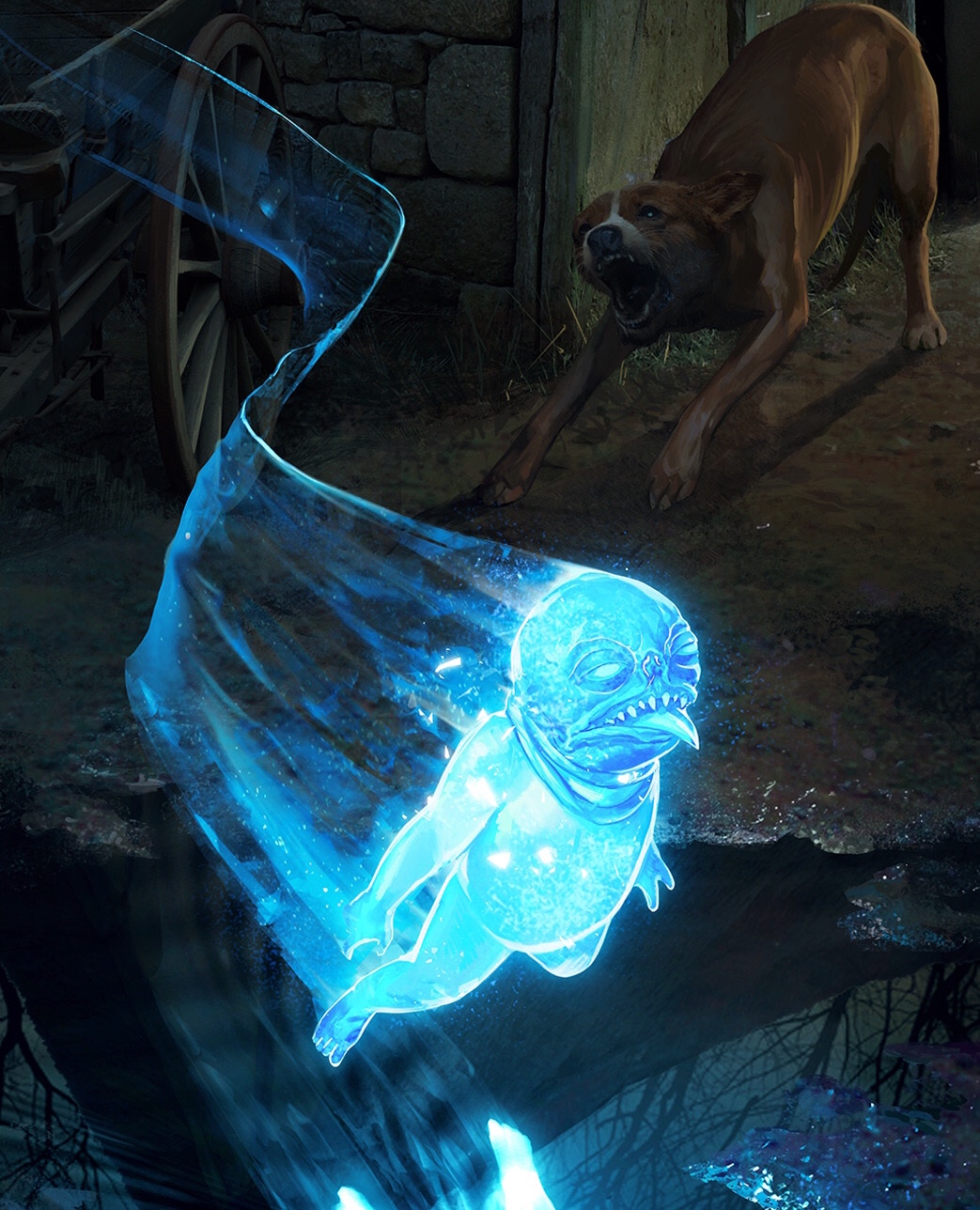
Lubberkin
Geralt could mercy-kill the Botchling... or do something else! If you manage to be inquisitive enough, you'll learn that a Botchling's curse and hatred over being discarded could be lifted by actually going through a ritual that involves taking it and giving it a proper burial under the family house's threshold and giving it an actual name. This is based on the actual Slavic myth, where doing that exact thing will transform the Poroniec into the friendly, house-guarding Kłobuk, which would watch over the 'house it can never call home'. The English translation, Lubberkin, draws from a different English folklore fey creature, which, while having no connections to stillborn babies at all, is also a friendly spirit that will perform housework in exchange for a plate of milk.
Witcher III's single Lubberkin is only encountered if you succeed in performing the ritual to bring peace to the poor little Botchling, and it will emerge as a Lubberkin -- a ghostly-blue version of the Botchling that will fly around without moving its limbs in the air and lead Geralt towards clues to find her living and missing sister and mother. Honestly, the Botchling and Lubberkin, once you get past the unsettling miscarriage themes, is probably my favourite monster in this game because of just how much it fits into Witcher III's 'old traditional legends' vibe and the fact that despite being a nasty fetus creature it still got me really, really sad about it.
________________________________
Draconids
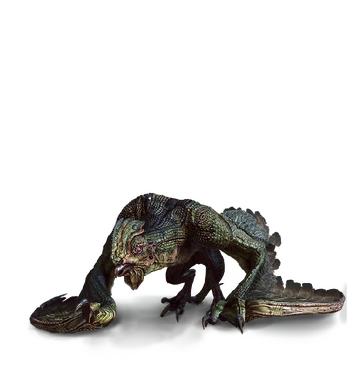
Basilisk
One of the classic 'lesser dragons' taken from various European mythology, a serpent's egg that was incubated by a hen, and in myths, had petrification powers. Witcher III's basilisk entry immediately tells us that no, basilisks in this world have no such stone-gaze powers, although acknowledges it as one of the most common beliefs about the basilisk. I kind of like that, I kind of like that they're acknowledging part of the real-life inspiration that they decide that they can't use for this game. And the basilisk here is one of the various 'draconid' creatures in this game. Geralt fights a straight-up real dragon at the final mission of Witcher II: Assassins of Kings, but it's also noted that real, intelligent dragons are vanishingly rare. But these other smaller, lesser draconids sure do roam the lands of Velen and Skellige! Basilisks are noted to be ambush predators, hiding in cellars, caves and sewers before jumping out to chomp down on its prey and attack with poison spit.
It's also noted that in-universe, basilisk skin is basically the Witcher-world's equivalent to, like, fancy crocodile-skin or snake-skin handbags, which led to the decline of the basilisk species as many noblemen and noblewomen send out hunters to take down basilisks for their hide. The design of the basilisk itself (which is shared with the cockatrice below) is pretty simple, a wyvern-style dragon (two wings, two legs, walks around like a bat) but with the head of a very, very ugly chicken. I actually really like this interpretation a lot! A lot of fantasy interpretations for basilisks and cockatrices play up the chicken part or the reptile/serpent part, and those are certainly cool, but I really did go 'huh, that's a very interesting twist on the inspiration!' when I first saw the Witcher's basilisk. I think it's actually the weakest of the draconid creatures, though. I don't remember fighting them too much and they don't even have a Gwent card art to go with them.
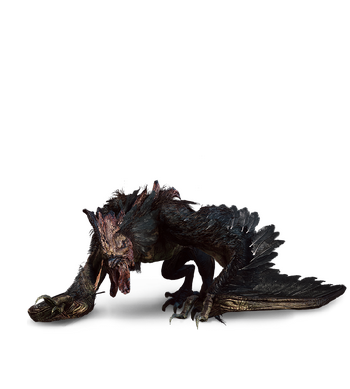
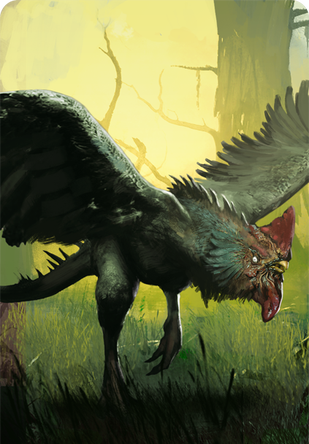
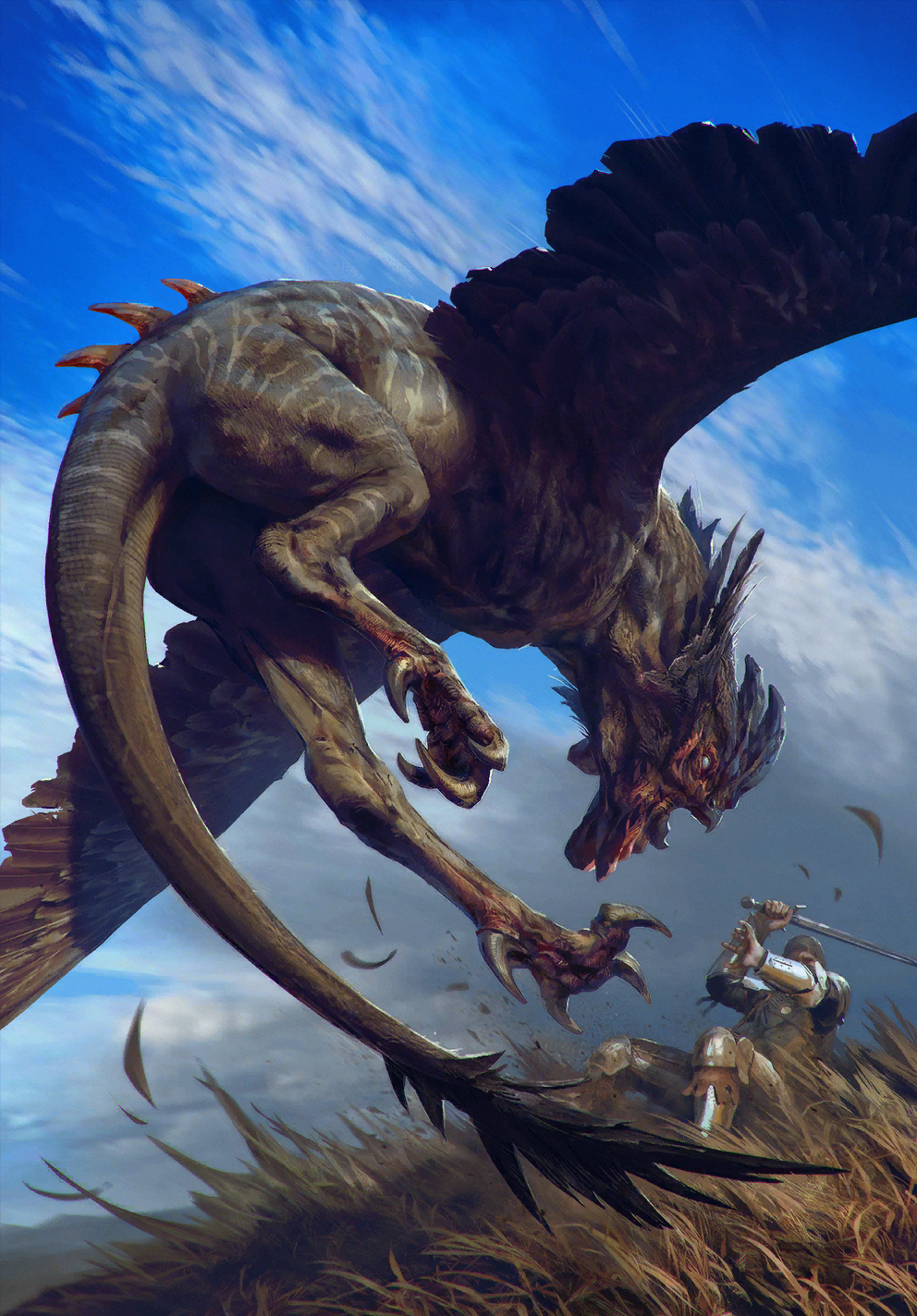
Cockatrice
Sharing a lot of similar features with the basilisk model, the cockatrice does have a couple of very distinguishing features. In real-life mythology, cockatrices are chicken eggs incubated by serpents, meaning they're technically more chicken than reptile... which is highlighted here. Witcher's cockatrice has more prominent feathers, and, most importantly, its head is just straight-up a hideous, mutated chicken. Like basilisks, the bestiary notes that cockatrices are often conflated with tales of killing with their gaze alone, although in Witcher-world, their danger is basically from the fact that they can fly and rend you in bombing strafes. Witcher III has a bunch of these airborne enemies compared to its predecessors, I feel, because in this game Geralt has access to a crossbow! He can shoot the damn flying chicken-dragons from the sky!
Most of what I say about the basilisk really applies to the cockatrice. I really do like the twist in the visual design, and the chicken-head is particularly fun and prominent in that Gwent card art. The cockatrice is also the first monster in the Witcher III's bestiary to have a 'named' variant listed as a separate entry, the powerful and cunning Shrieker, which is the boss of one of the many, many contract quests Geralt has to go through. As far as I can tell, though, there really isn't anything too different from most of the named variants, so unless there's something that's more interesting about them, I won't be talking about any of the named variants.
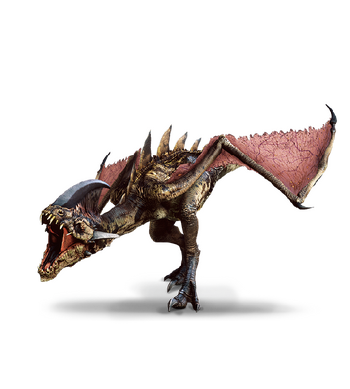
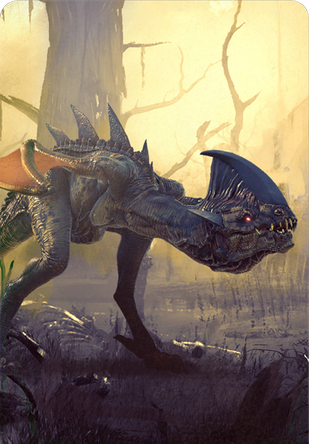
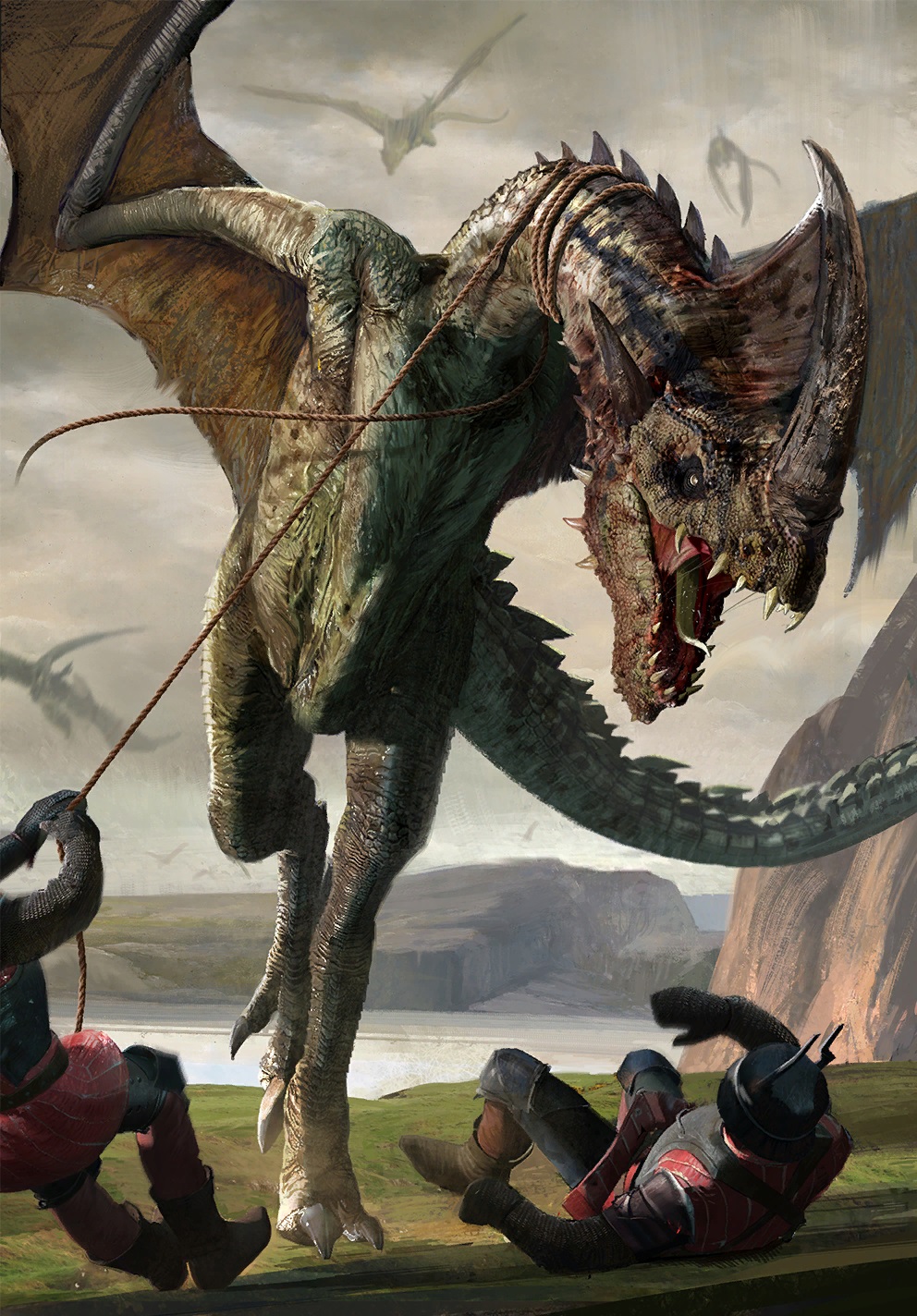
Forktail
We have more draconids! I do like one of the flavour text here, where a lot of people just don't really care that these aren't 'real' dragons per se. If it looks, behaves and murders peasants like dragons, what's the difference? The Forktails are, I feel, one of the more common draconids that Geralt faces, and they're... they're almost always found running around on land like giant irritable chicken-dragons. Kind of reminds me of Ornithomimid dinosaurs, actually. If they had giant dragon heads and tucked-away giant bat wings. As you might gather from their name, the Forktail's huge gimmick is that their tails are barbed, poisonous and they will spin around and catch you with the long, sweeping tail. I do really like the design, though, that head with the long, horn-crest thing does look pretty cool, and I feel the fact that it runs around like a chicken with its wings tucked next to it makes it such a different draconid creature compared to the likes of the cockatrice/basilisk duo and the wyverns.
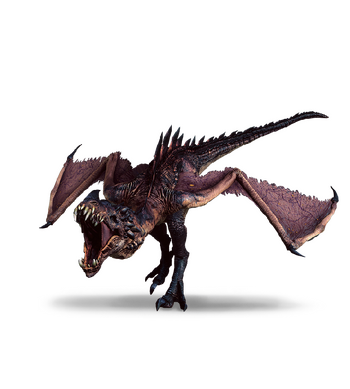
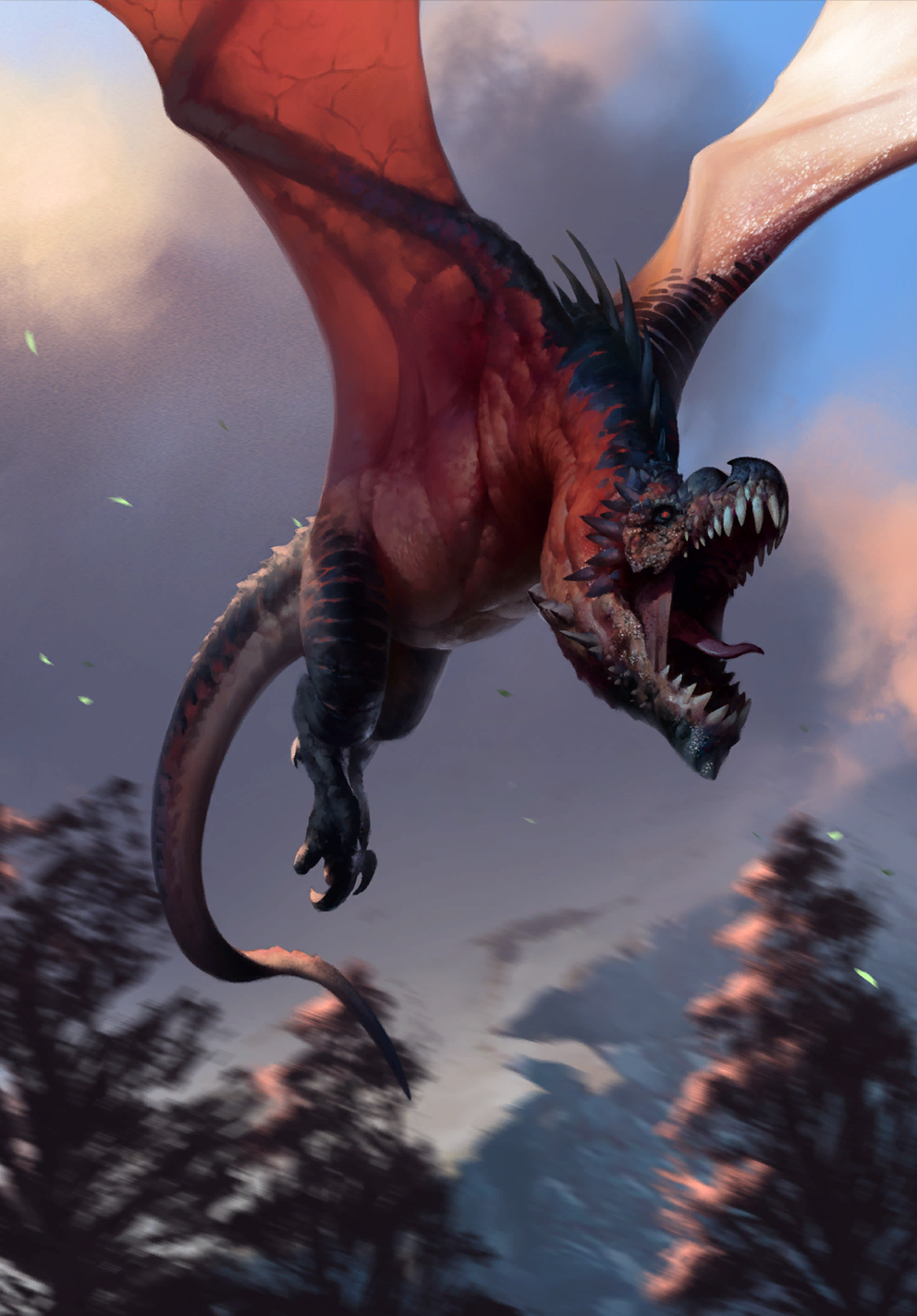
Wyvern
The archetypal dragon-but-not-intelligent-like-real-dragons are the wyverns. Which... again, from a body shape point of view doesn't look too different from the forktails and cockatrices. It's clear that they reused a lot of the assets for the draconid enemies, and... I can't really fault them, the game has a lot of different enemies and they actually do manage to make a lot of the draconids feel distinct despite them technically just swapping out what the heads and wings look like. Wyverns in Witcher III are some of the more powerful draconid enemies, and they tend to make their nests on cliffs and mountains like a bird of prey. Like forktails, they have poison-tipped tails. There's really not much to say here, though, these are bigger than forktails and far more likely to take into the sky, but they're still pretty cool.
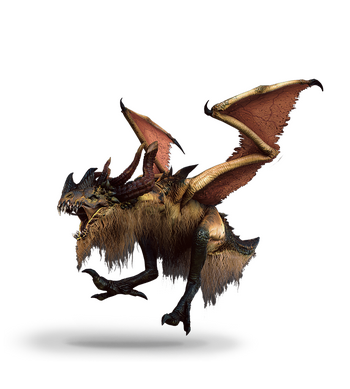
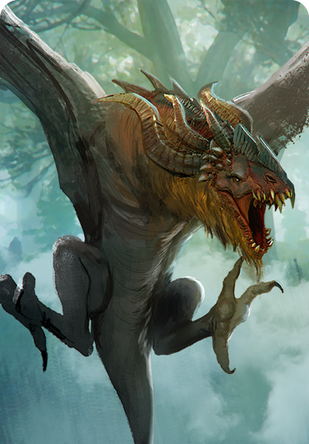
Royal Wyvern
Royal Wyverns are basically the 'elite' version of wyverns, noted to be smart enough to basically behave like hunters, observing where humans like to travel and ambushing trade routes and stuff. Their model gives them a bunch of extra horns and fur, and are noted to be far more vicious and intelligent than their lesser kin. Not really a whole ton to say here, although the different model is certainly cool.
________________________________
Elementa
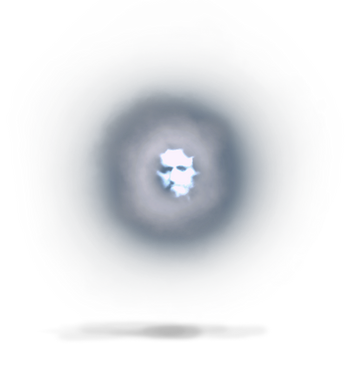
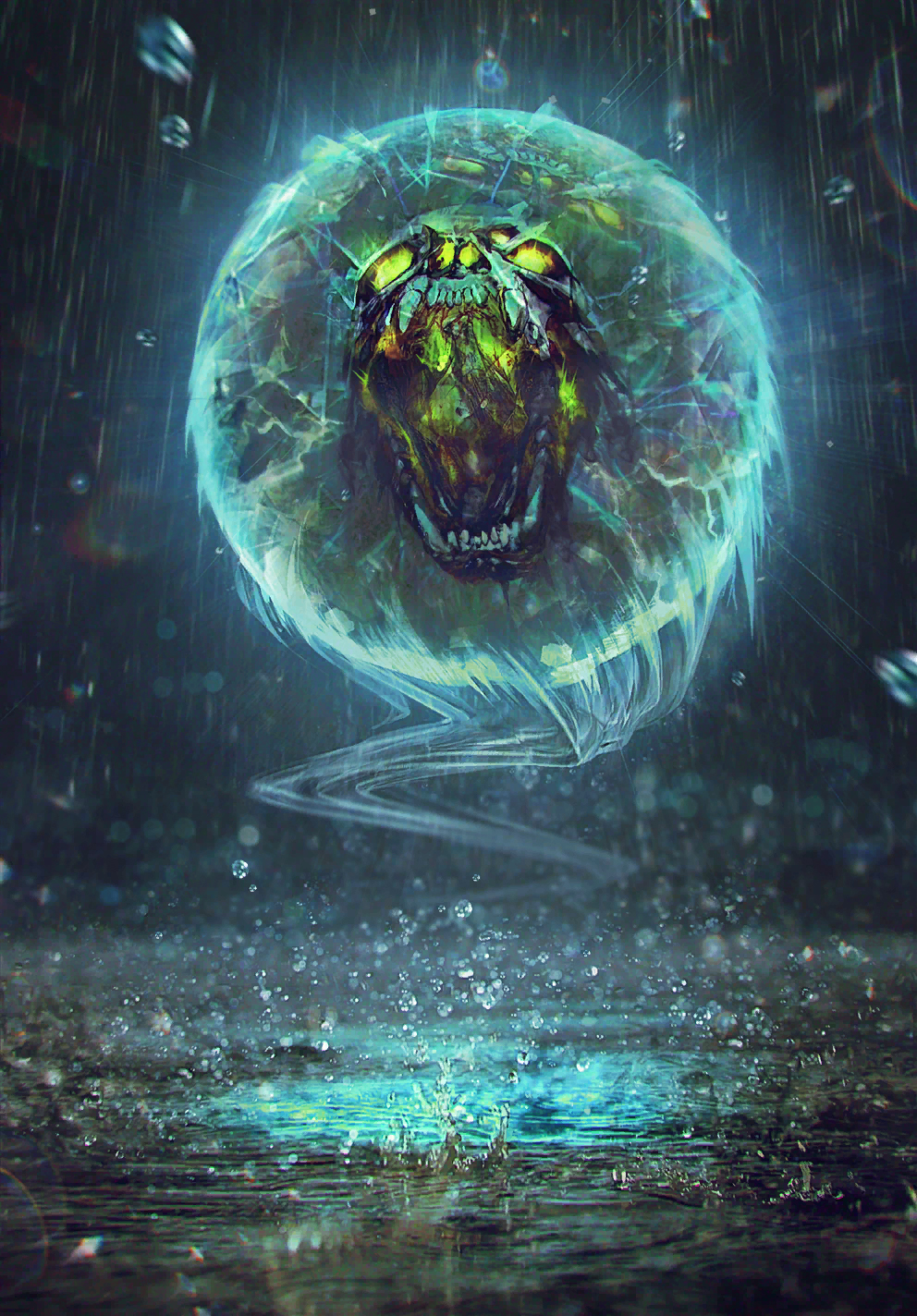
Djinn
And here we go into the Elementa, which are essentially elementals in other fantasy games. The Djinn is very, very prominent in the history of the Witcher, being one of the most prominent beings that Geralt has to face in the first anthology novel, The Last Wish, and the one that binds the fates of Geralt and Yennefer together. I don't think that the Djinn in the novel had any specific form, and in Witcher III they are depicted as giant floating clouds able to create blizzards, thunderbolts and swarms of ice spikes. And if you manage to somehow capture one, they'll be able to grant wishes, albeit sometimes twisting it because djinni hate being ordered by humans. The image here shows a head surrounded in a ball of energy, but that's only after Geralt and Yennefer were able to trap the djinni in a magic bubble.
Like D&D (and I'm pretty sure it's only exclusive to fantasy and not from the Arabic origins of the djinn), Djinni are powerful air elementals, and also like D&D, are counterparts to the Ifrit, D'ao and Maride. The whole 'genie in a bottle' bit (when the earlier Witcher works were basically a 'twisted' take on classic fairytales) comes from the fact that particularly powerful mages are able to, through a ritual, trap djinns in bottles and force them to become basically batteries for magical power. In Witcher III, the djinni is basically just a once-off boss that you fight as a follow up to The Last Wish novel, although I won't spoil anything about that in these reviews. It's got a great soundtrack and a great story behind it, but I can't say that the actual design nor the boss fight is anything notable.
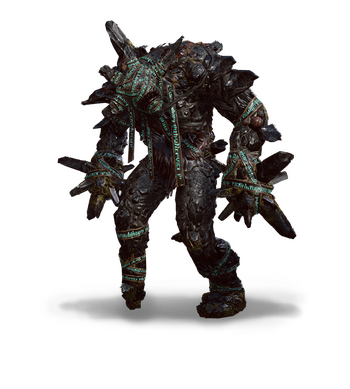
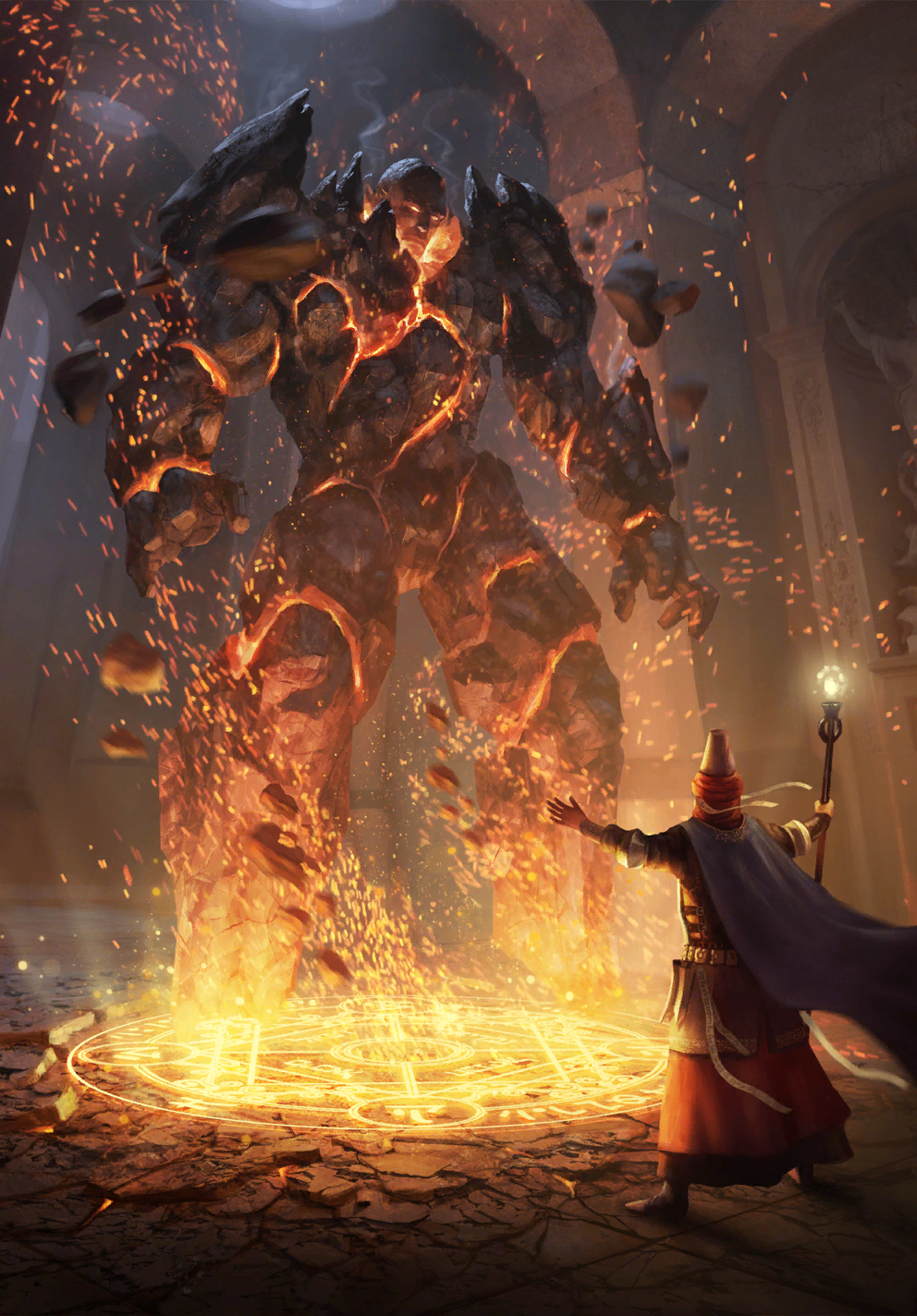
Golem
A lot of the 'elementa' enemies are basically repeats of enemies we got in Witcher II, and the models, while certainly upgraded with fancy graphics, do look pretty similar. And I've always loved the Golem/Fire Elemental model in Witcher II, and seeing it back basically unchanged in Witcher III makes me happy. I really do like just how wretched and cobbled-together the vibe of Witcher's golems are, where they really look like a mage hastily bound together random scraps of wood, stone and whatever they had handy to make the crudest shape of a humanoid possible. Look at this guy, with a misshapen, lumpy spike-ball for a head, a peg-leg and a hole in his chest! And he's got these runic bandages wrapped all around it that's animating it! Golems are basically found whenever mages are involved, where they bring these mindless automatons to essentially guard a place, which they will do to their dying breaths because they are utterly mindless. All the golems are basically immune to most of Geralt's tricks short of generally just bashing it to bits while dodging its mindless charging, or, later on in the game, Dimetrium Bombs -- essentially a cloud of anti-magic particles.
One interesting thing to note is that the Gwent card art for the Golem has absolutely nothing in common with the Golem model in Witcher III. Whether this is based on concept art for the game, or if this is meant to represent a 'complete' golem that actually looks like an artificial person instead of an artificial Frankenstein's monster, I'm not sure. Still looks cool, though!
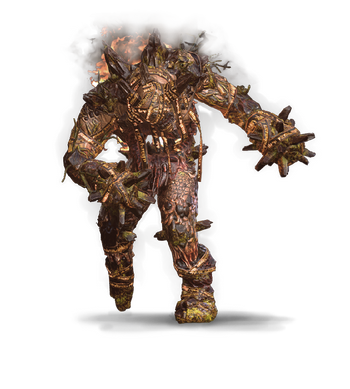
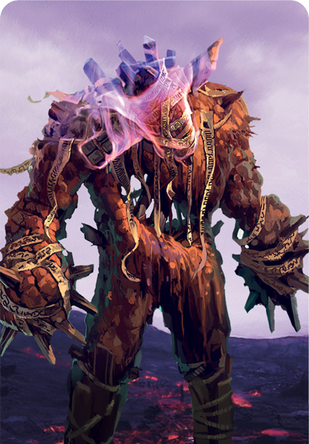
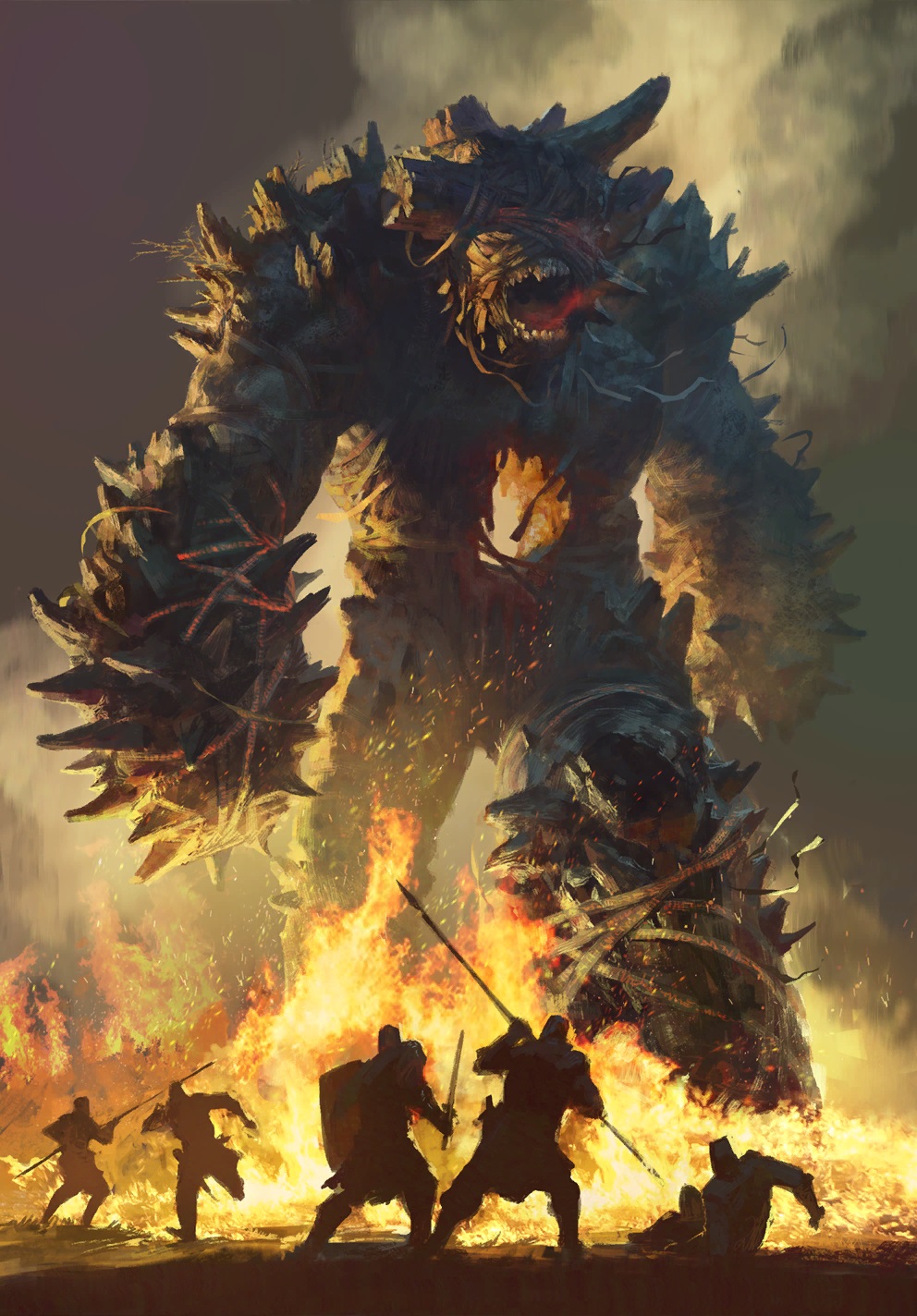
Fire Elemental
Still sharing its model with the golem like it did in Witcher II, the Fire Elementals are a bit easier to tell apart now that they're actually on fire and their bandages are glowing red. Not much to say here about the visual looks since it's basically the same with the Golem, but I really do like it. I don't think the elementals actually show up a whole lot in the Witcher III game, but they are memorable mini-boss fights, I feel, and, again, I really like their cobbled-together design. Being Fire Elementals, obviously they have additional fire-themed ranged attacks. It's actually hilarious if you're dumb enough to use Geralt's fire spell, Igni, on the Fire Elemental because it just makes it so much more powerful. The alternate Gwent artwork here is very interesting, it shows a completely titanic-sized Fire Elemental with a gross mouth with a tongue. None of the Fire Elementals (at least none I've met; I haven't completed the entire game just yet) are this terrifying! One of the Fire Elemental bosses is called an Ifrit, a neat nod to a completely different fire spirit.
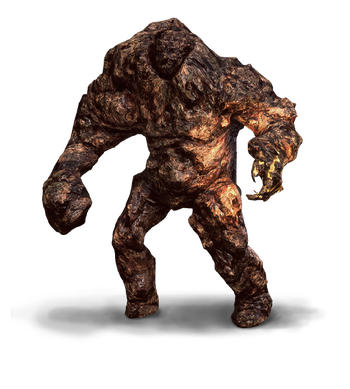
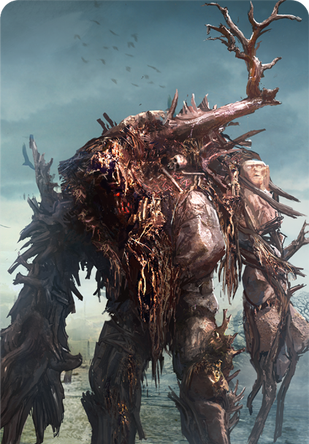
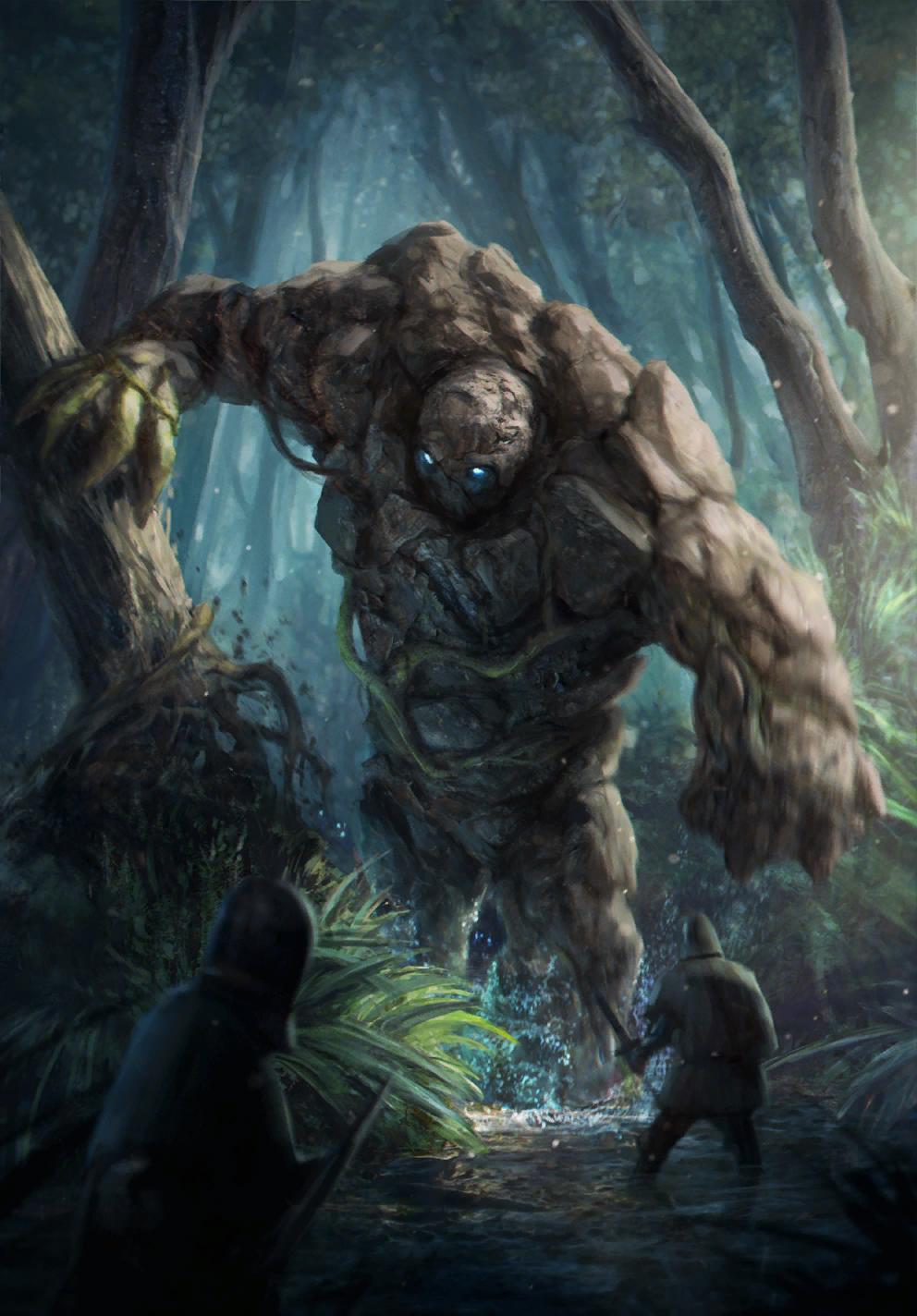
Earth Elemental
Another Witcher II veteran, Earth Elementals are basically huge, slightly-misshapen humanoids made out of stone and dirt brought to life by magic, are immune to poisons and fire and are very durable... but ultimately kind of just there. It's neat, and I do really like that they bring a variety to the whole thing, but looking at that first Gwent card art that's based on what I think is a concept art... and it's hard to care about the more boring rock-man when we almost got this complete bizarre hunchbacked abomination made out of twigs and rocks clumped together with mud and a creepy glowing face underneath a 'hoodie' made out of detritus.
One thing worth noting is that the elite, named Earth Elemental is called Therazane... which is just gloriously and shamelessly lifted from Therazane the Stone-Mother from World of Warcraft.
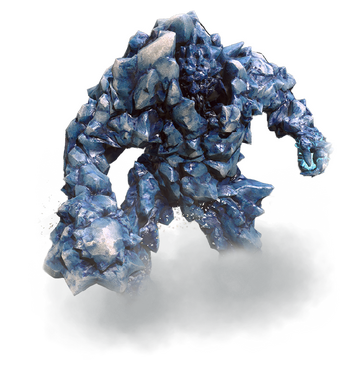
Ice Elemental
Ice Elementals are basically a 'reskin' of the Earth Elemental, but themed for ice, and, of course, show up in the very Norse-inspired Skellige Isles. It's pretty cool (heh) and is meant to represent the element of water, frozen and animated by magic. Again, like the golem and the other two basic elementals, these are almost always found in proximity of mages or mage laboratories and set there as a mindless guardian. Despite being made out of ice and Geralt having access to fire spells... ice elementals are so cold that Geralt's paltry Igni signs actually can't harm this thing, which I thought is a fun little subversion. Not a whole ton to say here, but I do like this one.
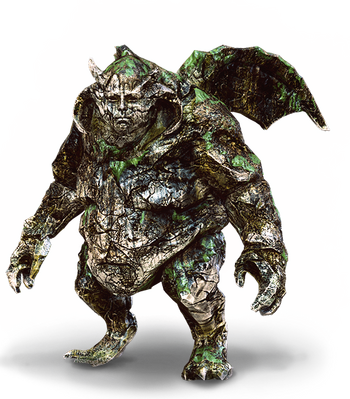
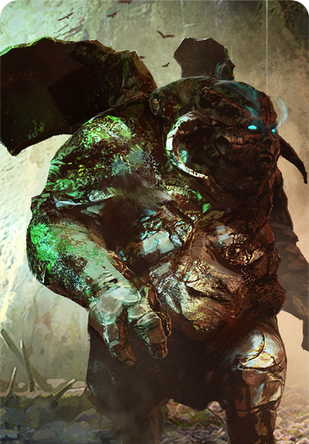
Gargoyle
Interesting! The Gargoyles of Witcher II are a bit more beastly, basically stone ghoul-like creatures with wings. But Gargoyles in Witcher III are a bit more... humanoid-looking, I guess, resembling portly humanoid statues with spikes and wings. I'm actually not sure which type of gargoyle I like more, whether it's the super-monstrous ones or the more humanoid-looking ones since both sort of gargoyle styles do exist in a lot of the actual building-decoration gargoyles. The lore here is that they're brought to life by magic to guard a mage's bases from intruders, and, of course, they can fly. One thing that I'm kind of sad didn't return from Witcher II is that the gargoyles of Loc Muinne in that game are bound to specific 'rune rooms', basically magic-style control rooms that will continually cause the gargoyles to regenerate until the runes are shut off. The Gargoyles in Witcher III are just kinda generic stone minions.
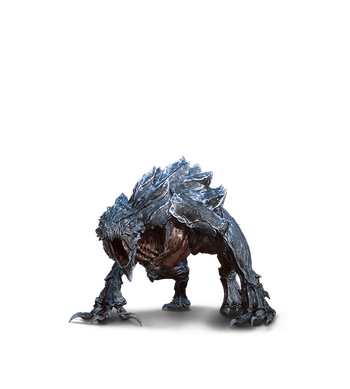
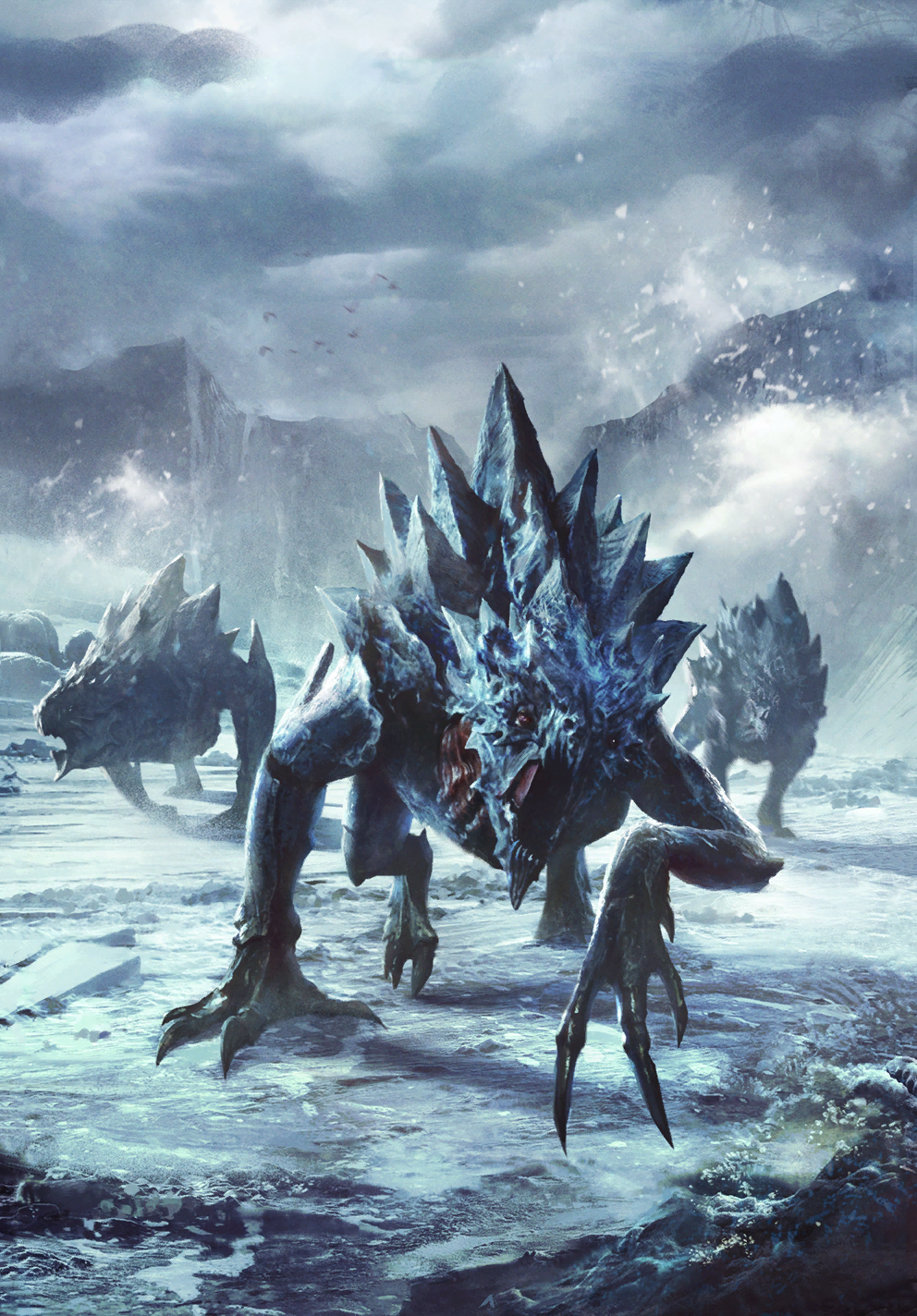
Hound of the Wild Hunt
And the last one we'll be talking on the Elementa actually involves the main antagonists of the game, the Wild Hunt. Without spoiling too much, the Wild Hunt (based on the Wild Hunt from real eastern-European myths) are essentially extra-dimensional elves who make use of the conjunction between the various worlds to swoop in and capture slaves. And, in-game, they're hunting for Geralt's adoptive daughter Ciri, which has super-powerful Elder Blood powers. They're very, very cool, dress up in all bony armour and are basically White-Walkers-meets-Lich-King. They don't just show up as cool bone knights on bone horses, though, but are also able to open portals to their icy home realms and summon blizzards... and these bizarre creatures. These are the 'Hounds' of the Wild Hunt, and they're basically gangly, ghoul-like ccreatures covered entirely in ice. Pretty cool design!
Design wise they're not too impressive, but I really do like the fact that they're not designed to resemble any specific living creature. They're not quite humanoid because the head is all wrong, they're not quite lupine as their names would suggest, and they really do look more like a bizarre ice ghoul more than anything else. They attack in packs, get enraged when they're at low health, and they can summon ice spikes and freeze the ground around them. And like most of the Wild Hunt's personnel, their hounds also get empowered whenever there are nearby portals to their home realm. These guys basically follow their masters in their raids, although some get left behind accidentally (Eredin is not a responsible pet owner) and menace the poor humans on Witcher's Earth.
________________________________
Hybrids
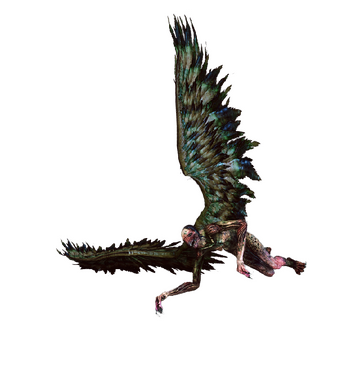
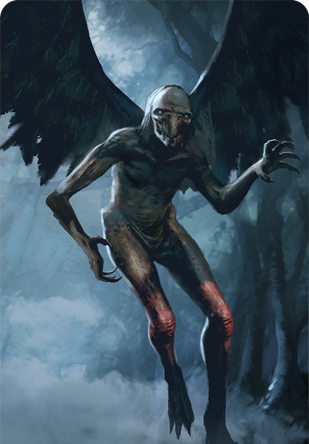
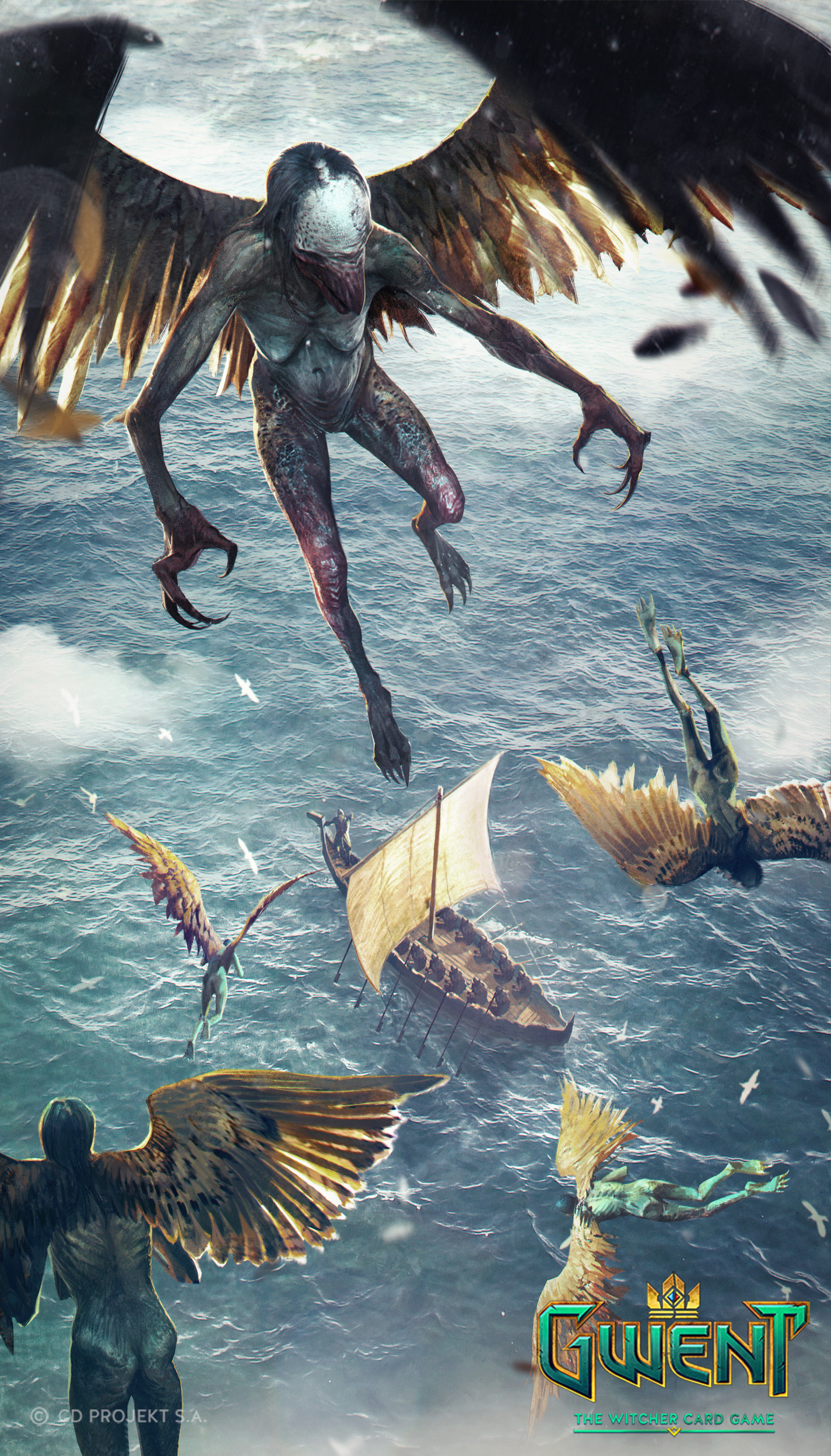
Harpy & Erynia
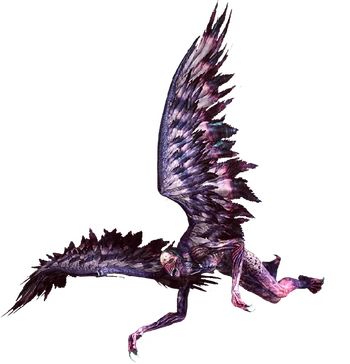 Classified as 'others' in their first appearance in Witcher II, the Harpies finally get their own category in 'hybrids', which seem to be... basically any combination of beasts fused into a single being that aren't originally human (unlike Cursed Ones). These winged hags aren't super-duper threatening, particularly now that Geralt has a new weapon specifically made for taking down airborne enemies. Their models and behaviour are still relatively unchanged from Witcher II --nasty looking emancipated women with haggard bird wings, they swarm around together and attack Geralt. Sometimes stronger versions called Erynias show up, although in Witcher III the Erynias seem to be restricted almost exclusively to Skellige. The bestiary highlights just how vile these creatures are, noting that they are smelly, stinky, covered in carrion, and even rats give their nests a wide berth. The bestiary mentions another harpy 'cousin', the Shishiga, but they don't actually appear in-game. Not a whole ton to say here, they're cool angry bird-ladies.
Classified as 'others' in their first appearance in Witcher II, the Harpies finally get their own category in 'hybrids', which seem to be... basically any combination of beasts fused into a single being that aren't originally human (unlike Cursed Ones). These winged hags aren't super-duper threatening, particularly now that Geralt has a new weapon specifically made for taking down airborne enemies. Their models and behaviour are still relatively unchanged from Witcher II --nasty looking emancipated women with haggard bird wings, they swarm around together and attack Geralt. Sometimes stronger versions called Erynias show up, although in Witcher III the Erynias seem to be restricted almost exclusively to Skellige. The bestiary highlights just how vile these creatures are, noting that they are smelly, stinky, covered in carrion, and even rats give their nests a wide berth. The bestiary mentions another harpy 'cousin', the Shishiga, but they don't actually appear in-game. Not a whole ton to say here, they're cool angry bird-ladies.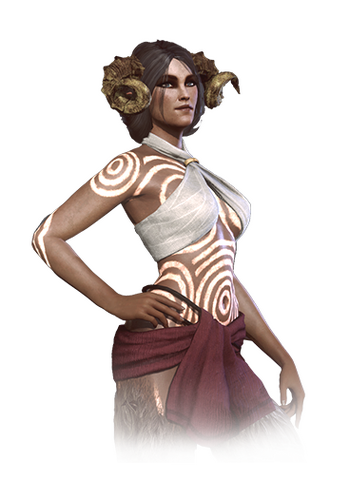
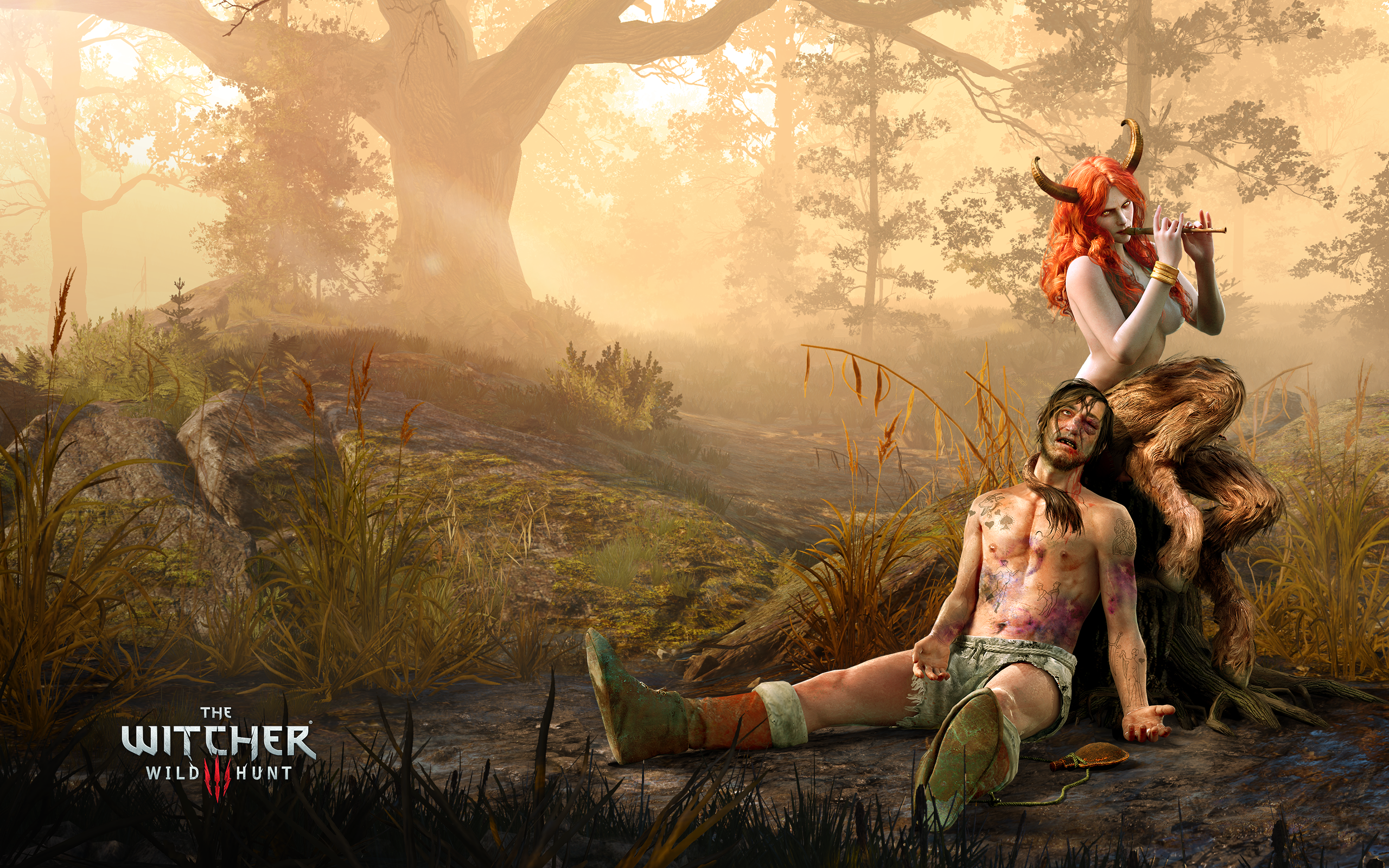
Succubus
So the succubi are counted as 'hybrids', then? Well, I suppose they do have satyr/faun-inspired goat lower legs and ram horns. It's honestly kind of weird that these are classified as monsters because every single succubi that Geralt of Rivia meets in the three games are basically just... well, people. One actually shows up as a very optional encounter in Witcher II, although that's on Iorveth's Path so I never actually got to meet her. Succubi in this world are basically pretty docile, they don't really desire to kill humans and are just driven by an insatiable lust... they fuck and fuck and fuck and fuck and fuck so much that their mortal paramour usually just expires because of excessive fucking. And considering just how much the Witcher franchise tend to play up the more monstrous side of mythological monsters (like the griffins and harpies on this category) it's actually refreshing to see one that's actually not as bad as the myths make it out to be. Even if, obviously, a significant part of this is probably just to give Geralt a sexual encounter option in the earlier games.
The succubi are still noted to sometimes 'lair' nearby settlements if they don't straight-up live among humans, and the closest thing to them being evil is that they sometimes treat hard-to-get targets like holy men as something that's a game to obtain. And, well, in combat, succubi are powerful spellcasters and also are part-goat, meaning that they can stomp you to death in the decidedly non-sexy way. In all of the encounters with succubi in Witcher III (and, as far as I can tell, the previous two games) there is always a non-hostile way to talk things out because the succubi are sometimes just not aware of how destructive their fornication can get, or, in the case of the more civilization-savvy ones, were just defending themselves from witch hunters. And honestly? There's really never a reason not to spare these ladies. They just don't know the limits of human men, you know?
The bestiary mentions 'menads' as a variant of succubi, but they are yet another monster that doesn't show up and, as far as I can tell, aren't based on a real mythological being.
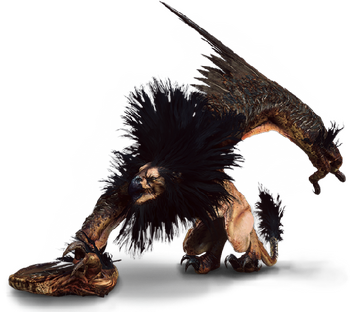

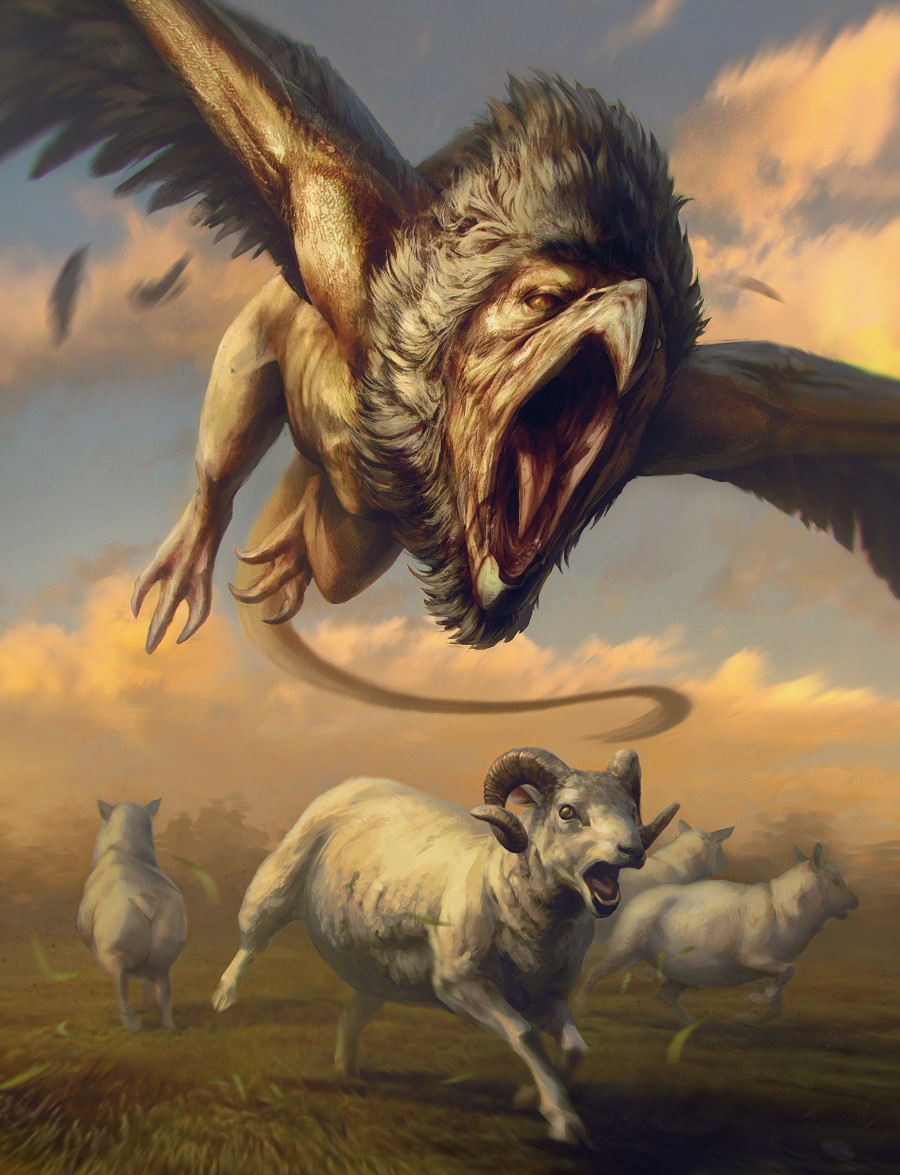
Griffin
Oh, oh, I do really like just how nasty looking the griffins in the land of the Witcher is. A Royal Griffin is basically the final boss for the tutorial/prologue area of Witcher III, teaching you how to fight a much more powerful monster with signs and your crossbow, and I really do like just how absolutely nasty the griffin is. It's honestly burned into most fantasy culture that griffins, being a mixture of lions and eagles, are these noble, quasi-holy creatures that are the mounts of the most valiant and honourable of knights and warriors. Whereas Witcher III's griffins are... these mangy combinations of the most rabid mountain lion and the most emancipated eagle. Just because most cultures accept eagles and lions as 'noble' animals doesn't mean that they are any less predatory than other carnivores, after all!
I really do like just how mangy the face and mane on the Griffin looks, and just how ragged it ends up looking. There's no real trace of heroism to the griffins of the Witcher world, and I absolutely love just how easily the visual design communicates that this is a vile, cruel predator that massacres caravans and natural beasts. An interesting quirk is that griffins mate for life and are extremely protective of their mate, something taken from the eagle side of the two animals that make up the griffin. In fact, the first Royal Griffin that Geralt has to kill is actually being far more violent and far more willing to attack the nearby settlements as revenge for its dead mate. In addition to regular griffins flying around the mountains of Velen, the more powerful versions of the griffins -- Archgriffins -- roam (mostly in Skellige Isles), and they have an additional acid-spit attack. I really like this creature a lot, as you can tell.
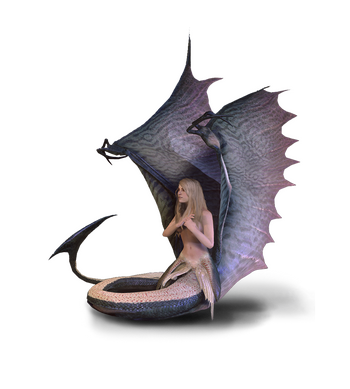
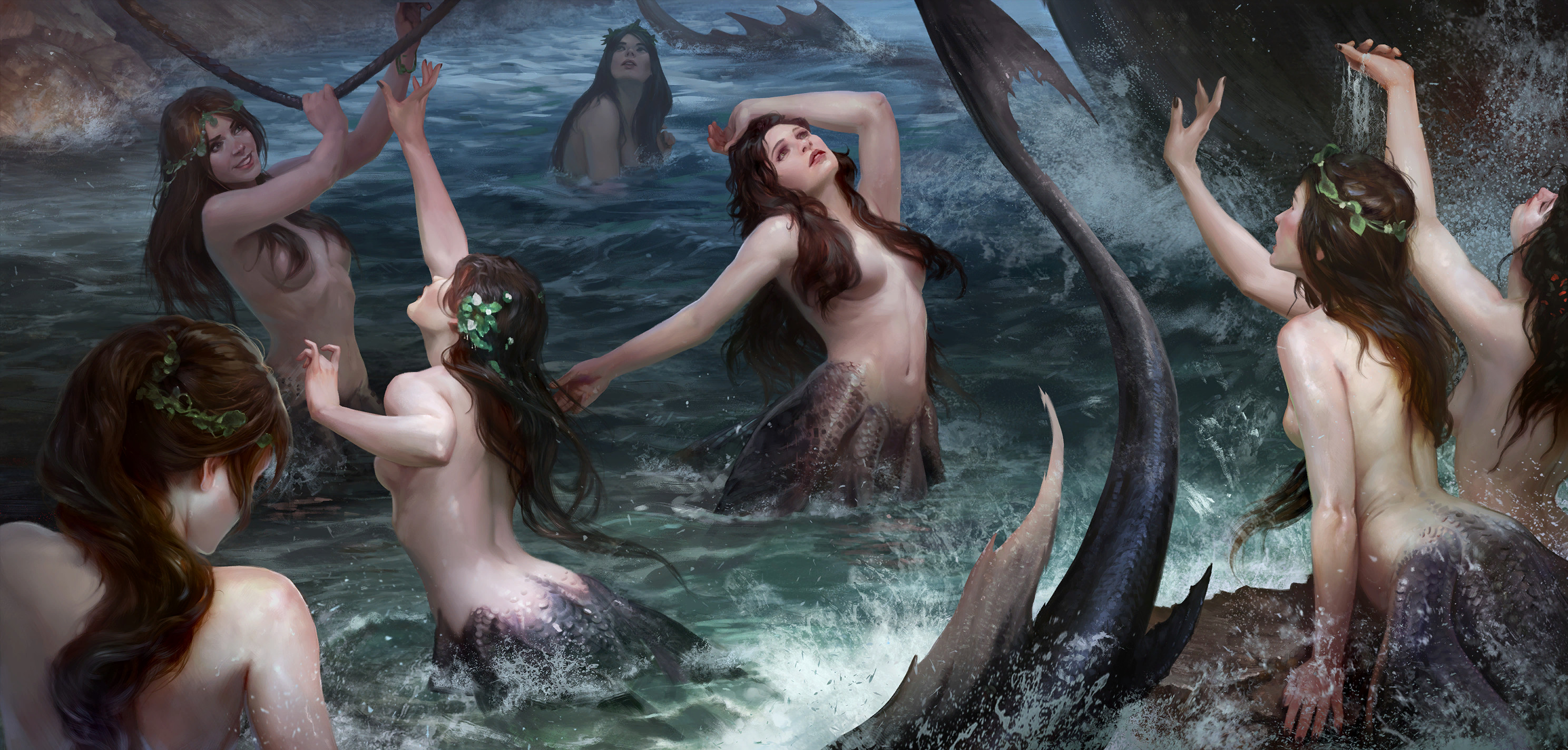
Siren & Ekhidna
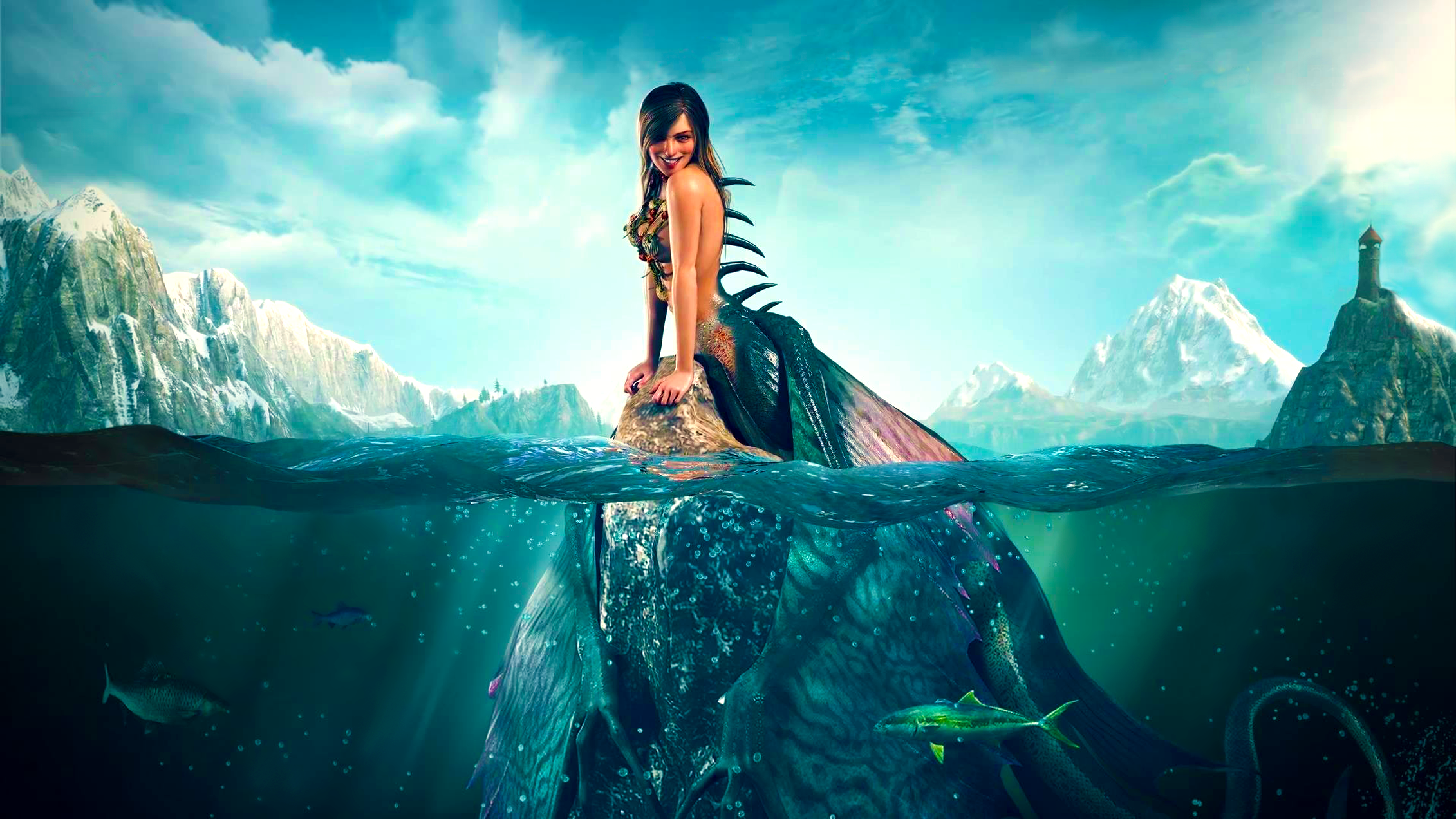 Probably one of my favourite adaptations of a mythological monster, the Sirens of Greek mythology tended to just be adapted as generic mermaids that sing to lure sailors to their deaths. The thing is, the original depiction of Sirens are meant to be bird-women, changing from birds with the heads of women to basically harpies before being changed into mermaid-esque forms in popular culture. And... and the design team for Witcher III made a very admirable job of combining both forms of the Siren -- the pretty, alluring sexy mermaid from common pop culture, and the bird-women able to, as legends tell it, tear the victims to shreds.
Probably one of my favourite adaptations of a mythological monster, the Sirens of Greek mythology tended to just be adapted as generic mermaids that sing to lure sailors to their deaths. The thing is, the original depiction of Sirens are meant to be bird-women, changing from birds with the heads of women to basically harpies before being changed into mermaid-esque forms in popular culture. And... and the design team for Witcher III made a very admirable job of combining both forms of the Siren -- the pretty, alluring sexy mermaid from common pop culture, and the bird-women able to, as legends tell it, tear the victims to shreds.And what they basically did was to combine both forms, making the basic body of the Siren look like a sexy mermaid with maybe just a longer tail than what you would associate with them... but they also have giant dragon-monster wings that sprout out from their hips. And while they sure look monstrous in that 3D render, with the human part being nestled within monstrous parts, the Gwent card art and the promotional picture shows just how easily these Sirens would be able to hide their more monstrous qualities as they pose above rocks and the sea level, with their monstrous wings being hidden under-water. And all of these pretty sirens basically use their humanoid sexy-women parts as an anglerfish's lure, because when the dumb Skellige sailors have made it near wing or tail-reach, they turn monstrous and om nom nom down on the sailors. In-game, they can fly and swim, but if you use your crossbow to ground them they're basically helpless.
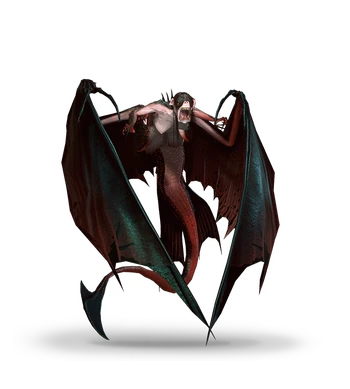
Ekhidna
The Sirens' more powerful cousins, the Ekhidna (named after the Mother of Monsters from Greek myth) don't even bother with the pretty-lady glamour and just fly around in clear sight, showing off their monstrous true form as they hunt humans like birds of prey. Pretty neat, even if i don't have a whole ton to say here beyond noting that they're more powerful versions of the Siren. Interestingly, the bestiary also notes that in the past, legend claims it that sirens and lamias (another monster based on Greek myth, although they don't show up in Witcher III) used to be friendly towards men and would even accept courtship... until some event caused them to all become hostile with no exceptions. Whether it's because men are scum who try to kidnap these ladies, or maybe those old legends are just fantasy after all, all Sirens in the game are utterly hostile.
________________________________
Insectoids
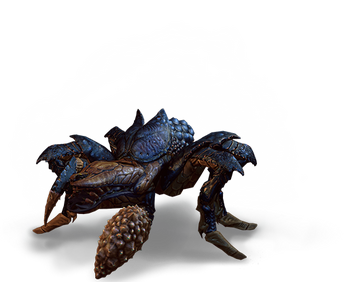
Endrega Worker
The final group of monsters we're covering here is the 'Insectoid' bunch, and, obviously, knowing me, it's one of my favourite enemies. All the Insectoid enemies that Geralt faces in Witcher III are all just imported from Witcher II, however, and none are obligatory fights. They just basically dot the jungles and caves around the no man's land of Velen and essentially just end up being an interesting break from all the Drowners, Ghouls and Wolves you fight as some of the weaker enemies. I do like the Endrega a lot, though, so I don't really mind.
As with Witcher II, multiple Endrega variants show up in the game, denoting their 'rank' among the hive structure, and I still love that these guys are basically insect-reptile hybrids. One thing that the Endrega of Witcher III has that their Witcher II counterparts seem to be lacking are the fact that most of them now have at least one giant barbed pincer-leg similar to a fiddler-crab, which is where they can inject Geralt with their venom. The Endrega Worker here is the most basic and weakest of the Endrega, being merely a weird mutant bug. They're a bit less buggy than their equivalents in Witcher II, but I don't really mind. They still look cool. The bestiary entries only show the 'reptile face' variant, but all the Endregas and Arachas in this game come in variants where they have a regular bug face, a crocodile face, or a flower face. I'm genuinely not sure which one I prefer, they're all cool.
s with real-life worker ants, the Endrega Workers are the most numerous, mostly build nests, gather food and caring for eggs... and while they're not dangerous to Geralt, they are certainly terrifying to a local peasant because it's a fucking crocodile-spider. Also, like real-life hive insects, they always travel in swarms, and will summon their more powerful buddies for help.
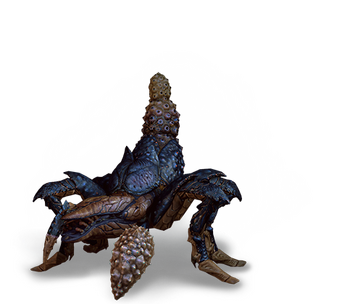

Endrega Drone
The Endrega Drone, counterparts to the Endrega Guard from Witcher II, are basically the same thing with the Endrega Workers if not for their weird, stumpy, upwards-pointing abdomens. I do like just how much the bestiary treats people who underestimate Endrega Workers and Drones with disdain. Interestingly, the Endrega Drones actually make a good use of the term 'drone' when you refer to one among an insect. These are actually not just generic droning minions of the hive, but rather the male versions that exist for a brief while to fertilize the 'queen' insect. It's just that in Endrega biology, the drones pass the time before reproduction by doubling as guards, something that the writer of the bestiary notes will weed out the weaker drones and ensuring only the most powerful and savage genes get passed on to the next generation. The Drones attack from afar with poisonous quills they can shoot at Geralt, and the Gwent art seems to show them with the flower-mouth that so many Witcher insect monsters tend to be depicted with. As far as I can remember, though, I don't think the Endrega model in Witcher III does that.
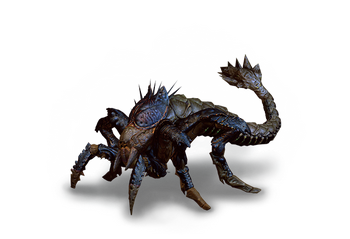
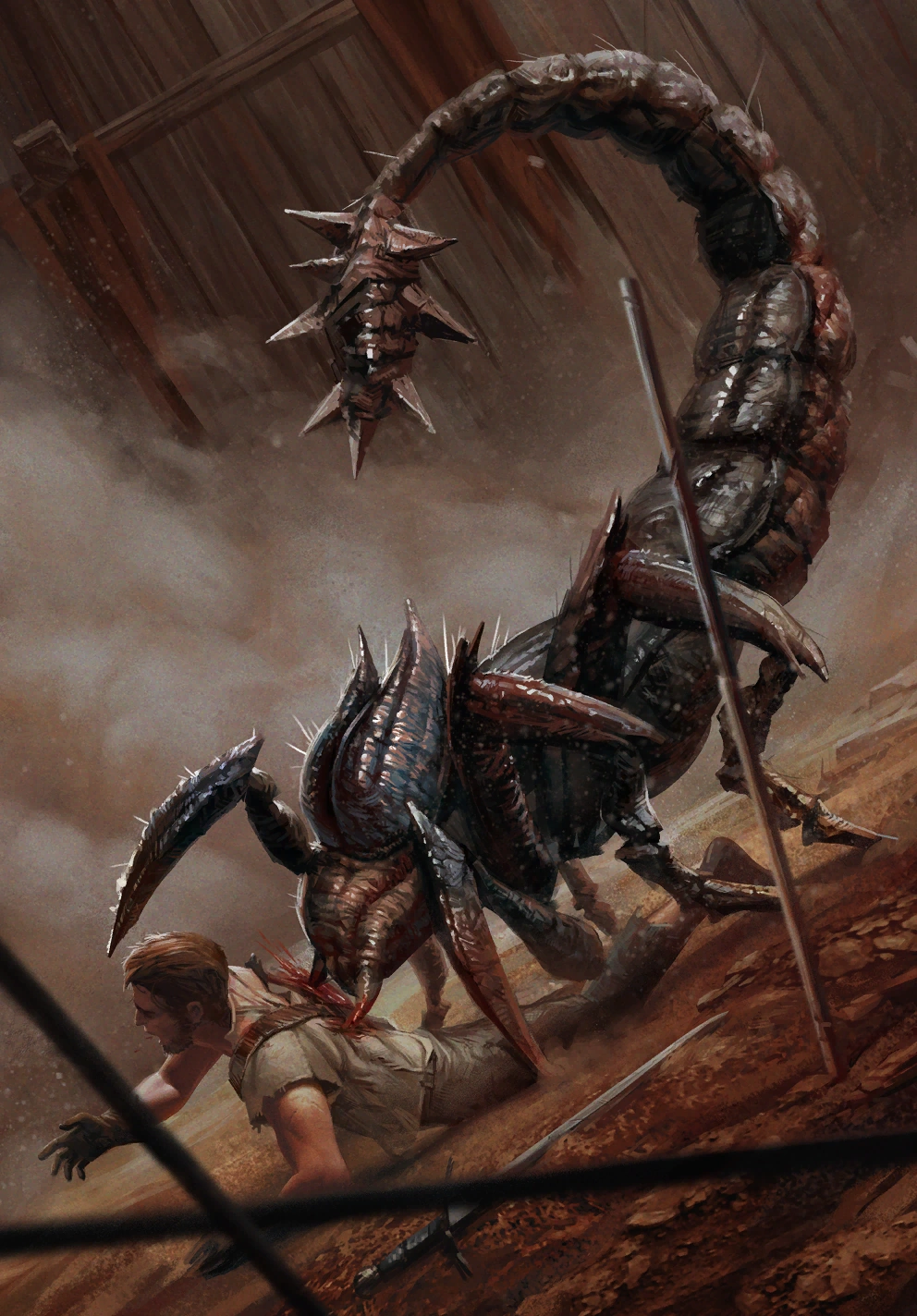
Endrega Warrior
The most powerful version of the Endrega encountered in Witcher III are the warriors, and you actually never encounter the Queens of the hives like you do in Witcher II. I guess Geralt scared all of them off? The Endrega Warriors still look exactly like how they look in Witcher II, all very cool with their long, tapering reptilian body that also resembles some sort of giant earwig or scorpion. Again, I really do find the blurring of the lines between reptile and insectoid inspiration in the Endrega Warrior to be my favourite feature. Other than that, though, I believe I have said most of what needs to be said about the Endrega Warrior back when I talked about them in Witcher II. The equivalent to soldier ants in an ant hive, the Endrega Warriors are only summoned by their brethren when there is a threat to the hive, and, well, they are the most powerful versions of the Endrega, spinning around and whacking Geralt with their gigantic club-tails. They're Ankylosaur giant spiders, that's very cool. Not much to say here without me repeating myself on how badass and cool I find the Endrega, really.
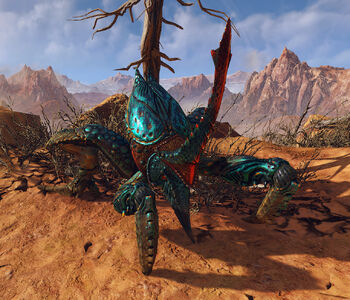
Sandcrab
These are technically insectoid monsters and sort of re-skins of the Endrega, but they don't get a Bestiary entry and are only encountered briefly when Geralt goes through the a different plane as part of the main quest. They're a typical fantasy monster, really, sand-dwelling giant beetle/spider creatures with hard carapaces, and they have the Nekker's ability to hide under the sand. They have giant beetle horns, which I really do like. Really, the most interesting part is that we don't really get to learn too much about the mysterious desert/canyon place, which Geralt's ally Avallac'h tells used to essentially be a plane inhabited by what is implied to be a sentient sea (???) that died and/or left. And only these beetle-like Sandcrabs are left on what used to be an ocean floor which also looks like some random Nevada desert. Pretty cool!
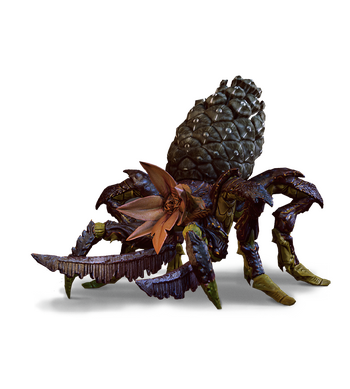
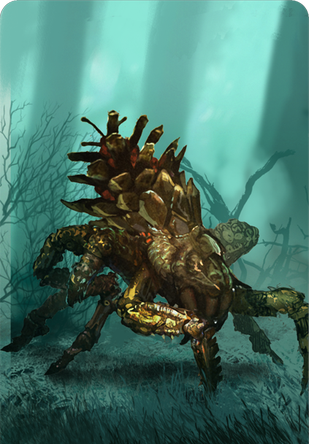
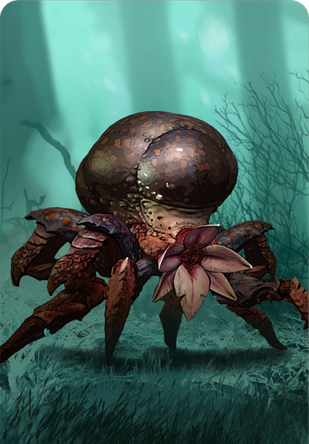
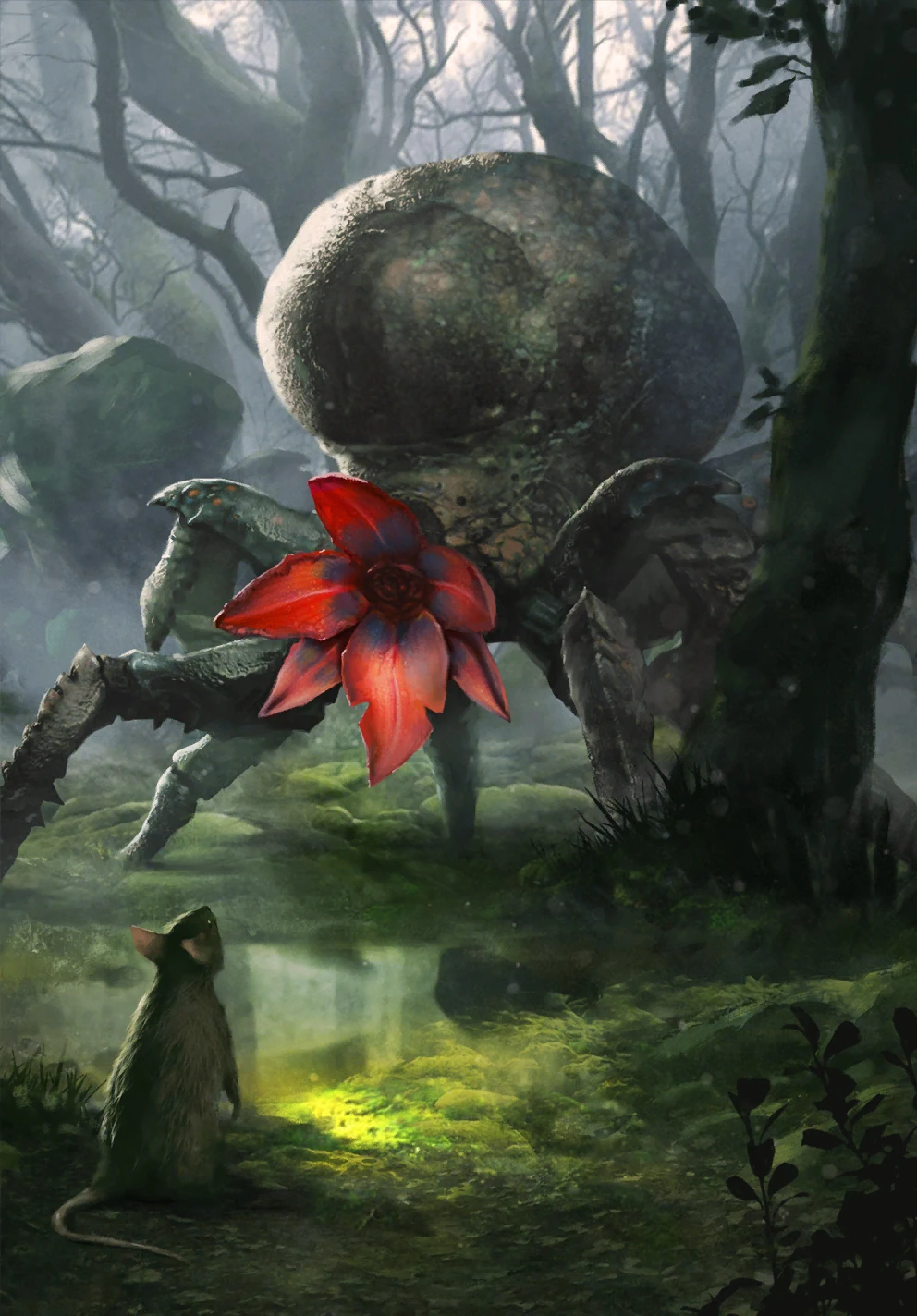
Arachas
The Arachas also make their return, with more variants than they did in Witcher II! Giant, spider-like beings with wacky-looking abdomens, two giant tusks and a face that opens up into a flower-like structure, the Arachas are pretty cool and creepy looking. The 'basic' Arachas has an abdomen that looks like an upturned pinecone, sort of resembling a bagworm pupa of sorts, and honestly, that giant flower-mouth (that not all Arachas have; some have regular bug faces) is easily still the most bizarre and coolest-looking part of what would otherwise be a boring giant spider. An Arachas is basically everything annoying about the Endrega -- poisonous, armoured at parts, looking creepy like spiders -- ramped up to eleven. Apparently they used to be native to the south but have slowly migrated north over the past couple of decades, which explains why the Arachas aren't around in the novels or the first Witcher game, but slowly grow more and more numerous in the second and third games. Not that the Arachas have devolved into common enemies, mind you. The bestiary notes that an Arachas usually has a sack-like, bulbous abdomen, but they have learned to utilize tree trunks to protect it, which is pretty cool, and this fact also allows the Arachas to basically make use of the tree trunk parts as camouflage, burying the rest of their body underground before bursting out to chomp on an unlucky traveler. In combat, as with Witcher II, the Arachas is able to spit web to bind Geralt in place, and its pincer-arms are so hard that Geralt can't actually damage it from the front.
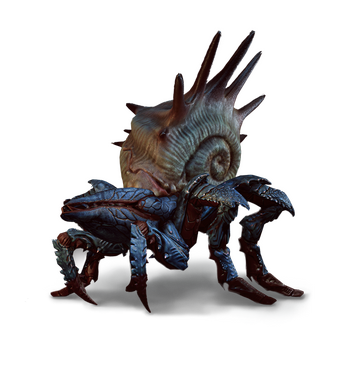
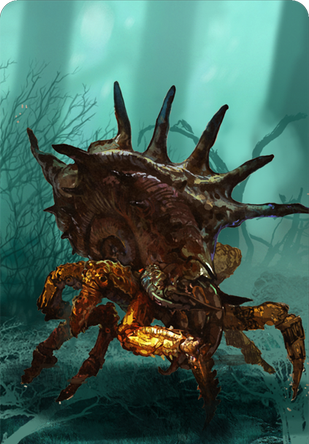
Armored Arachas
A couple of additional variants of the Arachas show up here, with my favourite being the Armored Arachas (a.k.a. the 'boss' Arachas from Witcher II), which has a gigantic spiky snail shell (???) around its abdomen instead of random salvaged tree barks. Also, this one shows the closed, Endrega-esque reptile mouth when it's not opened up to resemble a flower -- in-game, it's kind of randomized when a bug monster has a reptile mouth, a flower mouth or a regular spider-face. Easily the straight-up coolest-looking Arachas out of the four in-game variants, the bestiary notes that the Armored Arachas have basically evolved to grow a thick shell to hide is vulnerable abdomen, and they're basically far, far more tankier than their wood-covered or uncovered brethren, and you really have to rely on tricks like oils, the Yrden (slow-down) sign or crossbow bolts to damage this in the moments where its mouth is open.
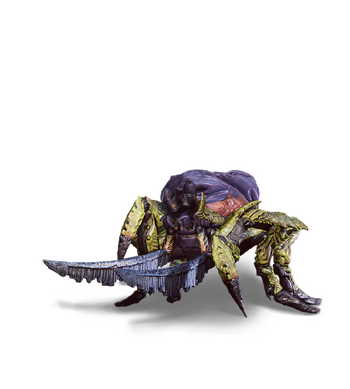
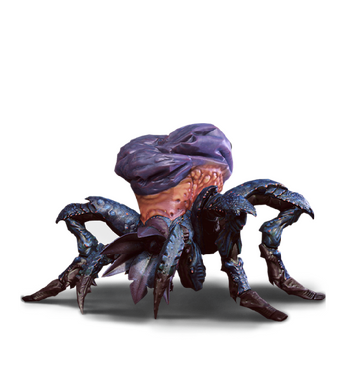

Venomous Arachas
The other variant of Arachas is the very brightly coloured Venomous Arachas, which... well, they're basically more venomous than the already-venomous Arachas. I really do like the colouration here, bright lavender and bright green. I certainly screams 'poisonous' all right! It's noted that the Venomous Arachas is so toxic that a single drop will kill any normal human, and even a Witcher's mutations can only stave off so much of their poison. And, well, it has a lot of extra attacks revolving around spraying its poison wantonly, although it mostly behaves similarly to normal Arachasae. A notable Venomous Arachas with a unique model that's a cross between a regular Arachas's body structure and the Venomous Arachas's abdomen is the named specimen Harrisi... which has a pretty fun model.
And... and that's about it for the first part of my coverage of Witcher III: Wild Hunt. Stay tuned soon for the second part of this, and maybe some time in the future I'll play through the two DLC's and talk about the monsters there too!
No comments:
Post a Comment